Zomato Case Study: Insights and Business Growth
Have you ever found yourself craving a specific type of cuisine but not knowing where to go? Or maybe you’re tired of eating the same old meals and want to explore new restaurants in your city. I know I have been there, desperately scrolling through endless options on various food delivery apps, hoping to find a place that satisfies both my taste buds and my budget. It can be overwhelming, to say the least.
But then I discovered Zomato, and my entire dining experience transformed. Zomato is not just a food delivery and restaurant discovery platform; it’s a game-changer. With its extensive database, user-friendly interface, and innovative features, Zomato has quickly become the go-to app for food lovers like me, offering a treasure trove of culinary delights at our fingertips.
In this case study, we will delve into the insights and strategies behind Zomato’s incredible success. We will unravel the secrets of their business growth, analyzing their data, exploring their innovative business strategy, and uncovering the results of their case study. From their marketing tactics and growth strategies to their unique business model, we will dissect the factors that have propelled Zomato to the forefront of the food industry.
Are you ready to embark on a gastronomic journey with us? Let’s dig deep into the Zomato case study and discover the ingredients that have made it a roaring success.
Table of Contents

Key Takeaways on Zomato Case Study:
- Zomato’s extensive database and user-friendly interface make it a go-to app for food lovers.
- The success of Zomato can be attributed to their innovative business strategy.
- Marketing tactics and growth strategies have played a crucial role in Zomato’s rise.
- Zomato’s unique business model sets it apart in the food industry.
- Exploring the Zomato case study provides valuable insights for aspiring entrepreneurs.
The Inception and Evolution of Zomato
In this section, we will explore the founding vision and origin story of Zomato. We’ll uncover how Zomato evolved from a simple restaurant search tool to a global food delivery service , showcasing its remarkable journey of growth and adaptability in the industry.
The Founding Vision and Origin Story
Zomato was founded in 2008 by Deepinder Goyal and Pankaj Chaddah in Delhi, India. The two friends envisioned a platform that would help users discover great restaurants and connect with the dining community. With a deep passion for food and technology, they set out to create a powerful tool that would revolutionize the way people search for and explore dining options.
What started as a humble restaurant search platform quickly gained traction and popularity among food enthusiasts. Zomato’s user-friendly interface and comprehensive database of eateries made it a go-to resource for individuals seeking dining recommendations. As Zomato’s user base grew, its founders realized the potential to expand their offering beyond restaurant discovery.
Pivotal Shift: From Restaurant Discovery to Food Delivery
An important milestone in Zomato’s evolution was its strategic decision to enter the food delivery market. Recognizing the increasing demand for convenient and reliable meal delivery options, Zomato leveraged its extensive network of restaurant partners and user base to launch its food delivery service .
This shift allowed Zomato to tap into a new revenue stream and provide greater convenience to its users. By integrating the food delivery service into its platform, Zomato created a seamless experience for users, allowing them to not only discover restaurants but also order food with just a few taps on their smartphones.
Zomato’s Global Expansion Trajectory
Zomato’s success in India paved the way for its global expansion. The company quickly expanded its operations to several countries, including the United States, United Kingdom, Australia, and many more. Through strategic acquisitions and partnerships, Zomato established a strong presence in multiple international markets.
Today, Zomato operates in over 20 countries and continues to expand its services to new regions. Its commitment to providing a reliable and efficient food delivery experience has made it a trusted brand among consumers worldwide.
Throughout its journey, Zomato has stayed true to its founding vision of connecting people with great food and fostering a vibrant dining community. Its evolution from a restaurant search tool to a global food delivery service showcases its ability to adapt and thrive in a rapidly changing industry.
| Year | Key Milestones |
|---|---|
| 2008 | Zomato founded as a restaurant search platform |
| 2014 | Launch of Zomato food delivery service |
| 2018 | Zomato expands to over 20 countries |
| 2021 | Zomato goes public with a successful IPO |
Zomato’s Approach to Market Penetration
In order to achieve market penetration and expand its reach, Zomato employs various strategies and tactics that resonate with its target audience and enable it to effectively cater to their needs and preferences. In this section, we will explore Zomato’s approach to market penetration and how it has contributed to the brand’s growth and success.
Understanding the Audience: Catering to the Tech-Savvy Generation
Zomato recognizes that its primary audience consists of tech-savvy individuals, particularly the younger generation. With this understanding, Zomato has tailored its services and user experience to align with the digital preferences of this demographic. Through user-friendly mobile applications and a seamless online ordering process, Zomato ensures that it remains accessible and convenient for its target audience, thereby establishing strong customer loyalty and engagement.
To further enhance its appeal to the tech-savvy generation, Zomato leverages social media platforms to connect with users, share engaging content, and communicate its brand messaging. With a vibrant online presence, Zomato stays top-of-mind and relevant, effectively capturing the attention and interest of its target audience.
Strategic Demographic Targeting and Service Versatility
Zomato understands the importance of demographic targeting in its market penetration strategy. By analyzing customer data and preferences, Zomato identifies specific demographic segments that align with its brand and services. This allows the company to tailor its marketing efforts and offerings in a way that resonates with these target segments, ultimately driving customer acquisition and loyalty.
Furthermore, Zomato’s versatility in providing a wide range of services contributes to its successful market penetration. By offering not only food delivery but also restaurant recommendations, reviews, and dining experiences, Zomato appeals to a broader customer base. This strategic diversification allows Zomato to reach and retain customers who may have different needs and preferences, thereby maximizing its market penetration.
Collaborations and Crisis Management Strategies
In addition to understanding its audience and catering to their needs, Zomato’s market penetration efforts are reinforced through strategic collaborations and effective crisis management strategies.
Through collaborations with other prominent brands, influencers, and key stakeholders, Zomato expands its reach and attracts new customers. By partnering with popular restaurants and culinary influencers, Zomato leverages their existing audiences and credibility to generate brand awareness and trust. These collaborations not only contribute to Zomato’s market penetration but also enhance its reputation as a reliable and influential platform in the food industry.
Moreover, Zomato’s crisis management strategies play a crucial role in maintaining its market penetration. In the face of challenges or controversies, Zomato takes proactive measures to address customer concerns and protect its brand image. By swiftly and transparently resolving issues, Zomato demonstrates its commitment to customer satisfaction, ultimately sustaining its market presence and preventing potential setbacks.
Through a combination of understanding its audience, strategic demographic targeting, service versatility, collaborations, and crisis management strategies, Zomato has effectively penetrated the market and established itself as a leading food delivery and restaurant discovery platform.
Zomato’s Harnessing of Digital Marketing Channels
In the fiercely competitive world of online food delivery, Zomato has emerged as a trailblazer by effectively utilizing various digital marketing channels. Through targeted strategies, Zomato has successfully reached its intended audience and engaged them through innovative tactics.
One of the key digital marketing channels that Zomato has harnessed is search advertising. By running carefully crafted search ad campaigns, Zomato ensures that it appears prominently in search engine results when users are looking for food delivery options. This boosts brand visibility and increases the likelihood of users choosing Zomato as their preferred platform.
Zomato has also utilized Google Display ads to further expand its reach. These visually appealing ads appear on relevant websites, capturing the attention of potential customers and driving them to the Zomato platform.
In addition to search and display advertising, Zomato recognizes the significance of social media marketing in capturing the attention of its target audience. Leveraging popular platforms such as Facebook, Instagram, and Twitter, Zomato builds brand awareness and engages with users through creative content and interactive campaigns. By maintaining an active presence on social media, Zomato ensures that it remains top of mind for users seeking food delivery services.
An integral part of Zomato’s digital marketing strategy is email marketing . Through personalized and targeted email campaigns, Zomato keeps users informed about new offerings, discounts, and promotions. By leveraging the power of email, Zomato nurtures customer loyalty and encourages repeat orders.
In summary, Zomato’s success in the digital realm can be attributed to its strategic utilization of various marketing channels. By employing search ad campaigns, Google Display ads, social media marketing, and email marketing, Zomato effectively reaches and engages its target audience, establishing itself as a leading player in the online food delivery industry.
Integrating Social Media Engagement in Zomato’s Brand Strategy
In today’s digital age, social media has become a powerful platform for brands to connect with their audience. Zomato recognizes the significance of social media engagement and has successfully integrated it into its brand strategy . By leveraging the power of social media, Zomato has been able to foster meaningful relationships with its customers and create a strong online presence.
Mastering Trend-Jacking and Meme Marketing
Zomato has mastered the art of trend-jacking and meme marketing, allowing the brand to stay relevant and engage with its target audience effectively. By tapping into popular trends and creating humorous and engaging content, Zomato has been able to capture the attention of a younger demographic. This strategy not only helps in attracting new customers but also strengthens the brand’s connection with its existing customer base.
One of Zomato’s successful trend-jacking campaigns was during the release of a popular TV show. The brand cleverly incorporated themes and characters from the show into its social media posts, creating a buzz among fans and driving engagement. This strategy showcases Zomato’s ability to understand its audience’s interests and capitalize on trending topics to increase brand visibility.
Creative Campaigns That Resonate with Young Audiences
Zomato has consistently developed creative campaigns that resonate with young audiences. By understanding the preferences and behavior of its target demographic, Zomato has been able to create content that is entertaining, relatable, and shareable.
For example, during a major cricket tournament, Zomato launched a campaign featuring witty and cricket-themed content. This campaign not only generated excitement among cricket enthusiasts but also increased brand awareness and engagement. By aligning itself with popular events and using creative storytelling, Zomato effectively captures the attention of its young audience and builds a positive brand image.
Leveraging Influencers and User-Generated Content
Zomato understands the power of influencer marketing in today’s social media landscape. The brand has successfully collaborated with influencers in the food and lifestyle space to promote its services and build credibility. By partnering with trusted voices, Zomato has been able to reach a wider audience and tap into new markets.
In addition to influencer marketing, Zomato also leverages user-generated content. By encouraging customers to share their experiences on social media using hashtags and tagging Zomato, the brand creates a sense of community and authenticity. User-generated content provides social proof and acts as a powerful tool to engage with customers and boost brand loyalty.
The integration of social media engagement into Zomato’s brand strategy has been instrumental in building a strong online presence, connecting with the target audience, and driving business growth.
The Art of Email and Content Marketing: Zomato’s Creative Edge
In today’s digital landscape, email and content marketing play a crucial role in engaging and nurturing customers. Zomato, a leading food delivery and restaurant discovery platform, has mastered the art of leveraging these strategies to create a personalized and impactful marketing approach.
Maximizing Impact with Personalized Email Campaigns
Zomato understands the power of personalization in email marketing. By segmenting their audience based on preferences, location, and past behavior, they deliver targeted and relevant content directly to their subscribers’ inboxes. This level of personalization fosters a deeper connection with customers, enhancing brand loyalty and driving engagement.
Through personalized email campaigns, Zomato provides tailored recommendations, discounts, and promotions to cater to individual tastes and preferences. By sending curated content that matches the recipient’s food preferences and dining habits, Zomato ensures that each email delivers meaningful value to the recipient.
Investing in Content Quality over Quantity
Zomato understands that content quality is paramount in capturing and retaining the attention of their audience. Instead of overwhelming subscribers with excessive email volume, Zomato focuses on delivering high-quality and engaging content that adds value to their customers’ lives.
By providing informative articles, restaurant reviews, chef interviews, and culinary tips, Zomato positions itself as a trusted source of food-related information. This content not only enhances the customer experience but also establishes Zomato as an authority in the industry. By investing in content quality, Zomato ensures that their email communications are eagerly anticipated and actively consumed by their subscribers.
Innovative Call-To-Actions and Themed Campaigns
Zomato takes a creative approach to call-to-actions (CTAs) in their email campaigns. Instead of using generic phrases, they employ innovative CTAs that capture the attention and curiosity of recipients. By using compelling language and attractive design elements, Zomato encourages users to take action, whether it’s exploring new restaurants, placing an order, or participating in exclusive promotions.
Zomato also utilizes themed campaigns to engage their audience. By aligning their email content with current events, holidays, or seasons, Zomato taps into the interests and sentiments of subscribers, making their emails more relevant and timely. Themed campaigns provide a unique opportunity to create excitement and foster engagement, ultimately driving conversions and customer loyalty.
Overall, Zomato’s email and content marketing strategies demonstrate their commitment to delivering personalized and valuable experiences to their customers. Through targeted and relevant email campaigns, high-quality content, and innovative CTAs and themed campaigns, Zomato sets themselves apart in the competitive food delivery industry.
Zomato’s Business Model: A Diverse Revenue Ecosystem
In this section, we will analyze Zomato’s business model, which encompasses a diverse revenue ecosystem. Zomato has successfully implemented various monetization strategies to generate revenue and ensure its sustainability in the competitive food delivery industry.
Restaurant Listings and Advertising: Zomato offers restaurants the opportunity to list their businesses on its platform and advertise their services to a wide audience. This allows restaurants to increase their visibility and attract more customers.
Subscription Programs: Zomato offers subscription programs, such as Zomato Gold, which provide exclusive benefits to subscribers, including discounts on dining and delivery. This not only generates additional revenue but also fosters customer loyalty.
Food Delivery Commissions: Zomato earns revenue by charging a commission fee on food deliveries facilitated through its platform. This fee is typically a percentage of the order value and ensures that Zomato benefits from the growing demand for food delivery services.
Infrastructure Services: Zomato provides restaurants with infrastructure services, such as Zomato Kitchen, which allows them to expand their delivery capabilities without setting up their own kitchen facilities. By offering these services, Zomato generates revenue while supporting restaurant growth.
Live Events: Zomato organizes live events, such as food festivals and restaurant collaborations, which not only generate revenue through ticket sales but also drive customer engagement and promote the Zomato brand.
By exploring these revenue streams, we gain insights into Zomato’s diverse business model and its ability to adapt to the evolving needs of the food service industry.
| Revenue Stream | Description |
|---|---|
| Restaurant Listings and Advertising | Zomato offers restaurants the opportunity to list their businesses on its platform and advertise their services. |
| Subscription Programs | Zomato offers exclusive benefits to subscribers through its subscription programs like Zomato Gold. |
| Food Delivery Commissions | Zomato charges a commission fee on food deliveries facilitated through its platform. |
| Infrastructure Services | Zomato provides restaurants with infrastructure services, such as Zomato Kitchen, to support their delivery capabilities. |
| Live Events | Zomato organizes food festivals and collaborations to drive engagement and generate revenue. |
The Significance of Influencer Partnerships in Zomato’s Growth
In today’s digital age, influencer marketing has become a powerful tool for brands to reach their target audience and build a strong online presence. Zomato, the leading food delivery and restaurant discovery platform, understands the value of influencer partnerships in driving growth and expanding its market reach.
By collaborating with influencers, both macro and micro, Zomato has been able to tap into new markets and engage with its target audience more effectively. These influencers, with their strong online presence and credibility, have the ability to influence consumer behavior and shape opinions. By leveraging their reach and influence, Zomato has been able to increase brand visibility, gain new customers, and drive user engagement.
One of the key advantages of influencer partnerships for Zomato is the ability to build trust and credibility among its user base. Influencers act as brand advocates, sharing their positive experiences and promoting Zomato’s services to their followers. This not only increases brand trust but also generates word-of-mouth recommendations, which are highly valuable in the food delivery industry.
In addition to trust-building, influencer partnerships help Zomato to target specific niche markets and demographics effectively. By collaborating with influencers who have a strong presence in specific regions or amongst certain communities, Zomato can tailor its marketing messages and offerings to suit the preferences and needs of those target audiences.
Zomato’s influencer partnerships have also played a crucial role in driving user engagement and fostering brand loyalty. Through contests, giveaways, and exclusive promotions, Zomato incentivizes its audience to engage with the brand and take action. By partnering with influencers to promote these campaigns, Zomato is able to amplify its reach and encourage users to participate, resulting in higher user engagement and increased brand loyalty.
In conclusion, influencer partnerships have been instrumental in Zomato’s growth and success. By collaborating with influential individuals, Zomato has expanded its reach, built trust and credibility, targeted niche markets effectively, and fostered user engagement and loyalty. As influencer marketing continues to evolve, we can expect Zomato to further leverage these partnerships to drive its future growth.
Learning from Zomato’s Strategic Alliances and Acquisitions
In this section, we will explore the valuable lessons we can learn from Zomato’s strategic alliances and acquisitions. Zomato has effectively utilized these business moves to expand its reach, services, and overall market presence. By analyzing these strategic endeavors, we can gain insights that are relevant and applicable to aspiring entrepreneurs.
Strategic Business Moves Through Mergers and Acquisitions
Zomato has strategically executed mergers and acquisitions as part of its growth strategy. By joining forces with complementary businesses, Zomato has been able to enhance its offerings, broaden its customer base, and strengthen its competitive position. These strategic partnerships have allowed Zomato to tap into new markets, acquire new technologies and expertise, and consolidate its market share.
Expansion via Zomato Kitchens and White Label Solutions
Zomato has also expanded its services through the introduction of Zomato Kitchens and white label solutions. Zomato Kitchens are dedicated spaces where restaurants can operate solely for food delivery, leveraging Zomato’s platform. This expansion strategy has enabled Zomato to enhance its food delivery capabilities and provide a more seamless experience for customers.
Additionally, Zomato offers white label solutions, allowing restaurants to leverage Zomato’s technology and infrastructure to launch their own delivery services. This strategic move has not only empowered restaurants but also increased Zomato’s reach and revenue streams.
Collaboration with Governments and Local Enterprises
Zomato’s collaboration with governments and local enterprises has played a crucial role in its growth and expansion. By partnering with governments, Zomato gains access to regulatory support and resources that facilitate its operations, particularly in new markets. Collaborations with local enterprises have also allowed Zomato to penetrate localized markets, leveraging existing networks and customer bases.
These strategic alliances and collaborations have enabled Zomato to navigate regulatory challenges, overcome barriers to entry, and establish a strong market presence. By partnering with key stakeholders, Zomato has been able to position itself as a trusted and reliable partner for governments and local businesses.
By studying Zomato’s strategic alliances and acquisitions, aspiring entrepreneurs can gain valuable insights into effective growth strategies, market penetration tactics, and the importance of strategic partnerships. Zomato’s success in expanding its reach, enhancing its services, and achieving market dominance serves as inspiration for entrepreneurs looking to make impactful moves in the competitive food delivery industry.
Conclusion: What we learnt from Zomato Case Study
Assessing zomato’s overall business growth and success.
In conclusion, Zomato has experienced remarkable business growth and achieved great success in the food delivery industry. Through its innovative strategies and adaptation to market trends, Zomato has transformed from a restaurant search tool into a global food delivery service. By catering to the tech-savvy generation, strategically targeting specific demographics, and implementing crisis management strategies, Zomato has successfully penetrated the market and gained a strong foothold.
Furthermore, Zomato’s effective utilization of digital marketing channels, integration of social media engagement, and creative email and content marketing have established it as a frontrunner in the industry. By harnessing the power of influencer partnerships and building a diverse revenue ecosystem, Zomato has further accelerated its growth and expanded its reach.
Key Takeaways from Zomato’s Journey for Aspiring Entrepreneurs
Aspiring entrepreneurs can draw several key takeaways from Zomato’s journey. Firstly, understanding and targeting the right audience is crucial for sustained success. By remaining agile and adapting to market trends, entrepreneurs can stay ahead of the competition. Additionally, investing in digital marketing strategies, social media engagement, and personalized email and content campaigns can effectively engage and retain customers.
Collaborations, strategic alliances, and acquisitions can also play a vital role in expanding business operations and reaching new markets. Finally, cultivating a strong brand image through influencer partnerships and user-generated content can boost credibility and generate brand loyalty.
Future Projections: Zomato as a Case Study for Industry Best Practices
Looking ahead, Zomato’s future appears promising. As a case study for industry best practices, Zomato’s success serves as a benchmark for aspiring entrepreneurs in the food service landscape. With its strong market presence, diversified business model, and continuous innovation, Zomato is well-positioned to drive further industry growth and shape the future of food delivery in India and beyond.
In conclusion, Zomato’s journey highlights the importance of adaptability, digital marketing prowess, strategic alliances, and strong branding. By applying these insights and emulating Zomato’s success strategies, aspiring entrepreneurs have the potential to thrive in the competitive food delivery industry.
Q: What is Zomato?
A: Zomato is a well-known food delivery and restaurant discovery platform.
Q: How did Zomato evolve over the years?
A: Zomato started as a restaurant search tool and has since evolved into a global food delivery service.
Q: In how many countries is Zomato available?
A: Zomato has expanded into multiple countries worldwide.
Q: How has Zomato approached market penetration?
A: Zomato caters to the tech-savvy audience and strategically targets different demographics. They have also collaborated with partners and implemented crisis management strategies.
Q: What digital marketing channels does Zomato utilize?
A: Zomato harnesses various channels, including search ad campaigns, Google Display ads, social media marketing, and email marketing.
Q: How does Zomato integrate social media engagement in its brand strategy?
A: Zomato excels in trend-jacking and meme marketing, creating creative campaigns that resonate with young audiences. They also collaborate with influencers and foster user-generated content.
Q: What is Zomato’s approach to email and content marketing?
A: Zomato sends personalized email campaigns, invests in quality content, and utilizes innovative call-to-actions and themed campaigns to engage users.
Q: How does Zomato generate revenue?
A: Zomato has a diverse revenue ecosystem, including restaurant listings and advertising, subscription programs, food delivery commissions, infrastructure services, and live events.
Q: What is the significance of influencer partnerships for Zomato?
A: Influencer partnerships help Zomato expand its reach, gain credibility, and engage its target audience.
Q: How has Zomato utilized strategic alliances and acquisitions?
A: Zomato has made strategic business moves through mergers and acquisitions, expanding its reach and services. They also collaborate with governments and local enterprises.
Q: What can we learn from Zomato’s overall business growth and success?
A: Zomato’s journey provides key takeaways for aspiring entrepreneurs, and it serves as a case study for industry best practices.
Similar Posts
What Are the Job Roles in Digital Marketing? Learn Now.
Top 10 Women Digital Marketers in India
How to Choose the Best Blogging Platform in 2024: The Ultimate Guide
Earn Big: 13 Money-Making Skills Every Student Must Know
Top Canva Alternatives for Design Creativity
What is Web Hosting – A Comprehensive Guide for Beginners
Leave a reply cancel reply.
Your email address will not be published. Required fields are marked *
Save my name, email, and website in this browser for the next time I comment.
No.9, 2nd Floor, Kempapura Main Rd, Pampa Extension, Hebbal, Bengaluru, Karnataka 560024
- +9180 3585 5515
- [email protected]
Use Full Links
- Work with us
Courses We Offer
- Digital Marketing Mastery
- Certified Digital Marketing
- Privacy Policy
- Terms & Conditions
- Refund Policy
- +(91)-9036276981
- [email protected]

A Detailed Zomato Case Study-2023
Few brands have expanded exponentially after their launch. One of them is Zomato.
How did they manage to achieve this success?
What did they do to improve their customer base?
What was Zomato’s marketing strategy which they used to attract customers?
We believe that Zomato’s digital marketing strategy played an important role in achieving all these.
This article evaluates a few e-marketing strategies and a detailed Zomato case study.
Zomato Case Study- About Zomato Company
When Zomato started, it aimed to become the best restaurant search and discovery platform.
It had the names of different restaurants, menus, costs, reviews, and other essential details. It offered in-depth information on more than 1.4 million restaurants across 23 countries.

Over the years, it has become a popular online food delivery platform. Now customers can order food from their favorite restaurants by using their website or app.
Zomato has many delivery executives who pick up the order from the eatery and deliver it to the customer’s address.
How was Zomato Started?
Zomato is an Indian group founded by two IIT graduates, Deepinder Goyal, and Pankaj Chaddah, in Delhi NCR in 2008.
Once Deepinder saw his colleagues ordering food from different restaurants. That was when Deepinder came up with bringing these restaurant menus online.
One day they noticed their colleagues standing in a long queue in the cafeteria waiting for lunch.
So they thought about how much time people could save if they did not have to wait and get their favorite food delivered to their doorstep whenever required.
It is how they started the online food delivery service under “FoodieBay” and renamed it “Zomato.” In the initial stage, FoodieBay listed restaurants in Delhi and NCR. But, they soon grew their business in other metro cities like Kolkata and Mumbai.
As FoodieBay started attracting more and more customers, the founders decided to revamp its name to appeal to audiences outside India too. So then they changed the name of FoodieBay to “Zomato.” By 2016, Zomato had its sophisticated app doing food deliveries from registered restaurants.
Zomato Business Model
The success of Zomato lies in its unique Business Model. Zomato is an app whose business model works around food supply online, providing knowledge, user reviews, and menus of partner restaurants. Here are some of the essential components of Zomato’s business model:
1. Customer segments- The customer segment of Zomato has three different components: Local restaurants, reviews, and users.
2. Zomato provisions- Zomato has created a well-designed valuation model for its food delivery services. Zomato Gold & Piggybank has enhanced the standard of services that Zomato offers.
3. Alliances of Zomato- New partnerships with several big names like Visa, Uber Taxi, and Paypal have improved the business model of Zomato.
This online food delivery app provides a discount to advertise its usage and improve its customer base, considering the tough competition in the market. It’s mainly a selling strategy. Zomato soon started its service in the Cloud Kitchen industry too.
Competitors of Zomato
With various new companies launched in the last decade, the food delivery industry has become one of the largest online platforms.
Thanks to companies like Zomato, Swiggy, Uber Eats, FoodPanda, etc., they are changing the food industry quickly.
The online food delivery system is booming in metros and Tier II and III cities. All credit goes to these significant apps in the market.
The online food delivery industry is rapidly evolving and attracts vast money. However, growing competition and unstable growth policies have resulted in few casualties.
Because of enormous losses, companies like TinyOwl and Eat Fresh had to shut their doors.
Even FoodPanda, a popular food delivery app with a presence in over 13 countries, has been attained several times, initially by Delivery Hero and followed by OLA.
However, the company is still struggling to maintain its position in the online food delivery industry.
Zomato Partnership Strategy
Zomato is continuously working with the government to ensure that its services run smoothly without any hindrance.
Furthermore, it makes sure to support millions of people who are part of their food delivery network by earning money to cover the loss if they have lost their money due to some crisis.
Zomato has always been a leader in identifying the importance of videos and using them to its benefit on the YouTube platform.
Zomato plays short, lively, and unskippable video ads on YouTube with a “call-to-action .” It is proven that video ads play an essential role in Zomato’s advertising strategy.
Zomato Digital Marketing Strategies
Zomato is active on Twitter, Instagram, and Facebook. It has 757K followers, 1.5 million followers on Twitter, and more than 737K followers on LinkedIn.
Zomato communicates with its customers by creating posts on popular subjects.
The brand is aware of its audiences, likes, and dislikes. As a result, it supports material that people love to share, discuss, and reconsider.
To engage customers online, it utilizes popular topics and publishes simple pictures.
During the 2016 Olympics, Zomato promoted its brand on Twitter. The brand used Olympic rings made of coffee and claimed they would receive the gold medal if drinking coffee were a sport.
Another hot subject that Zomato targeted was The “Pokemon Go” video game. Zomato started earning from that too. The brand used the famous Pikachu to promote its brand on Twitter.

Connecting with the customers by Zomato was aided by positing popular themes. Users possibly don’t want to contemplate too much while using social media. Individuals use social media to enjoy and view humorous content.
Zomato’s digital marketing strategies keep on getting adjusted with new trends emerging. They find new methods to attract customers’ attention. Currently, they are doing a fantastic job.
However, they will benefit considerably if they put forth a sustained effort.
These people are skilled enough to make the most of the Email marketing tool. One of the most innovative and effective strategies is Zomato’s email marketing.
Zomato keeps its customers loyal to its company by utilizing appealing subject lines and a drive to action.
The brand ran an email marketing campaign on Amazon Prime Video with the theme of the legendary series Mirzapur Season 2. Zomato used the subject lines from Mirzapur.
In addition, it created a CV for Biryani as a vital part of one of its most prominent email marketing methods. Food-related terms like, for example, “Curriculum Vitae of Biryani” was showcased by Zomato.
In addition, it used the CTA “hire immediately” instead of “order now.” It is the reason why Zomato’s email marketing strategy performed so well.
Regarding SEO, Zomato has put a lot of effort into this field. According to Ubersuggest data, Zomato ranks for around 7,544,348 keywords on June 2023. Its organic traffic is 77,874,441 users every month.
The company lists the top keywords in its niche and designs a webpage for those. This indicates to the search engine that these pages are apt for the user’s search query. It is a great strategy to ensure that your website ranks top.
As of June 2023, Zomato has 12,738, 685 backlinks from different high-authority domains. It, too, helps Zomato to rank higher.
They are active on Social Media too. Zomato has 829K followers on Instagram and around 1.5 M on Twitter.
Zomato Target Audience
Zomato’s target audience comprises people between 18 and 35 with smartphones and well-versed in using different apps.
It focuses on attracting two customers, one who prefers to eat out and another who wants to order food from outside and deliver it to their home. These groups frequently coincide.
The Zomato Gold program offers incentives for those who eat out and offers food delivery service for those who want the food delivered at home.
Individuals who work and want their food delivered to their office, students who live in hostels and need food, those who lack time to prepare their food, and those who occasionally enjoy eating outside under this group.
Digital Marketing Channels Used by Zomato
Zomato uses Google AdWords for its search ad campaigns. It targets terms like “Food,” “Restaurant names,” “Online food ordering,” and many others.
It focuses on attracting people who want food delivered to them. It also runs Google Display ads to target individuals on apps and websites from 3rd parties.
Influencer Marketing Strategy by Zomato
Zomato has advanced the “hyper-local marketing” idea by advertising its material in regional languages and contacting micro-influencers.
It, in turn, increases the credibility of Zomato by enabling them to connect with more and more audiences.
Zomato has focused on Influencer Marketing in its marketing strategy as it identifies its potential.
Whether micro or macro-influencer, Zomato is not afraid to move further and leverages its disrepute to expand its user base.
All of us are aware of Zomato’s humorous takes on different scenarios through its tweets.
Zomato offers content that will make its customers smile, no matter whatever issue they are dealing with currently or the one they encounter regularly.
Moreover, its humor spreads fast and has a powerful impact.
Memes play a significant role in social media, and the brand has mastered the “meme marketing” method as it recognizes its importance.
As a result, the food delivery company attracts a lot of organic traffic. Thanks to the content marketing strategies followed by the brand, which ultimately helps to increase its revenue.
Acquisitions
- Zomato has acquired 12 startups worldwide.
- In 2014, during July, Zomato made its initial acquisition by purchasing Menu-mania for an undisclosed amount.
- The company pursued other purchases, including obedovat.sk and lunchtime.cz, for US$3.25 million.
- In September 2014, the brand acquired a Poland-based restaurant search service, Gastronauci, for an undisclosed amount.
- In December 2014, it attained the Italian restaurant search service, Cibando.
- In 2015, it bought Urbanspoon, a Seattle-based food portal, for an estimated US $60 million.
- Other acquisitions of 2015 by Zomato include Mekanist in an all-money deal, MapleGraph, the Delhi-based startup that built MaplePOS, and NexTable, a restaurant and table reservation management platform.
- In 2016, it bought Sparse Labs, a logistics technology startup, and Runnr, a food delivery startup, in 2017.
- In September 2018, it bought TongueStun, a Bengaluru-based food e-marketplace, for around US$18 million in cash and stock deal.
- In December 2018, it bought a Lucknow-based startup, TechEagle Innovations, focusing on drones for an undisclosed amount. Zomato stated that the acquisition would assist in starting drone-based food delivery in India, establishing technology targeted toward a hub-to-hub delivery network.
- On 21st January 2020, Zomato bought its competitor Uber Eats’ in India, providing 10% of the total business to Uber Eats.
- On 29th June 2021, the company signed an agreement with Grofers to invest about US$120 million in the online grocery market by purchasing 9.3% stakes in the company.
- In 2022 during June, Zomato attained Blinkit for US$568 million in an all-stock deal.
Investors Leaving Zomato
Uber, which attained 7.8% of Zomato shares when Zomato bought its Indian subordinate of Uber Eats, left Zomato on 3rd August 22.
The shares were sold at around $392 million to protect Uber against the losses. ICICI Prudential Life and Fidelity purchased the Zomato stakes.
As per the reports published on 4th August 2022, Tiger Global sold half of its Zomato shares.

According to the news, the American Investment company sold the shares between 25th July and 2nd August 2022.
As a result, tiger Global had a total of 5.11% shares in Zomato, now 2.77% after the sale.
What are the Future Plans of Zomato?
Online food delivery platforms, Zomato and Swiggy, hit an all-time high in sales volumes during 2021, as most people stayed indoors due to an increase in Covid-19 cases.
Zomato said it earned more than 100 crores in Gross Merchandise Value (GMV), which shows the value of food ordered through this platform- compared to Rs. 75 crores it had achieved the previous year on 31st December.
While Zomato’s sales have been rising, the brand can still not make gains due to huge payments led by marketing and discounts.
It posted a total loss of Rs. 1,222 crores for March, a rise of about 50% since the previous year.
However, according to analysts, the food delivery business has a vast scope as it is estimated that the brand will achieve a turnover of $110 billion by 2025.
Zomato’s revenue increased 123% to Rs 4,109 crore in the financial year of 2021-22.
On the other hand, the brand’s loss increased by 24% to Rs. 1,098 crores. The brand’s annual report said its average monthly transacting customer base increased by nearly 116%.
The online food delivery giant, Zomato, narrowed its focus on three essential areas of online food ordering and delivery: food supply to restaurants through “Hyperpure” and fast commerce.
So Zomato started focusing on three vital areas: online food ordering and delivery, Hyperpure, and Quick commerce.
The brand’s online food delivery business is stable and headed toward productivity. As a result, online food delivery has enormous scope for growth in the future.
However, while restaurant food intake has risen in the last few years, its overall penetration in India is still drastically low compared to its worldwide competitors.

Streamlyn Academy is a digital marketing institute that delivers Internet Marketing & Programmatic Advertising courses to industry executives, entrepreneurs, and recent graduates.
- Digital marketing courses in Bangalore
- #34, Koramangala 4th Block, Near Sony World Junction 80ft Road, AVS Layout, 20th L Cross Road Bengaluru, Karnataka 560034
- +(91)-9036276981 , +(91)-9883790299
Quick Links
- Our Courses
- Certifications
- Corporate Training
- Hire From Us
- Write for Us
Information
- Privacy Policy
- Terms & Conditions
- Cookie Policy
Streamlyn Media

- © Copyright 2015-2024 Streamlyn Academy | All rights reserved

Your details have been submitted successfully.
Our team will get back to you shortly., we have received your message., someone from our team will contact you soon., thank you for enquiring about our course., our student counsellor will connect with you shortly., our academic counselor will contact you to schedule a demo as per your convenient time, for downloading our free digital marketing guide, we have sent the guide to the mail id provided. please check..

Zomato Case Study and Marketing Strategies | Success Story
Zomato’s case study, success story, marketing strategies and the overall journey will serve as an inspiring business model for Indian entrepreneurs for many years to come. Just like a typical startup, Zomato too has had its fair share of ups and downs. Because of this reason, many aspiring entrepreneurs can learn a lot by delving deep into what Zoma to has done to reach at the pinnacle of success in the food delivery industry.
In this post, we will take a good look at the entire journey of Zomato, its marketing strategies and the way it shaped the online food-ordering-and-delivery system in India.
Table of Contents
Quick t rivia
Did you know that Zomato has some sort of presence in as many as 24 countries and 10,000 cities? Zomato doesn’t provide food delivery in all these countries, but lists a plethora of information in terms of menu and user reviews.
T he f ounders of Zomato
Two IIT graduates named Deepinder Goyal and Pankaj Chaddah co-founded Zomato in July 2008. Before launching Zomato, they were employed with a managem ent consulting firm named Bain & Co. (Delhi office).
The idea behind Zomato – A brief history
The idea of an online food menu struck the duo when they saw people standing in a queue at lunchtime in office and waiting for their chance to order. So t hey took pictures of the food court menu and uploaded them on their company’s private network. Everybody at the com pany started using the website, and Deepinder and Pankaj noted the huge traffic the network got in a few days’ time.
This gave them the idea of starting a portal called “Foodiebay”, where users could browse through the menu of eating joints and restaurants and see their reviews and ratings right from their computer. Foodiebay began listing restaurants from Delhi-NCR on their website and quickly expan ded to other cities like Mumbai and Kolkata . The first professional restaurant that found its spot on Foodiebay was from Hauz Khas in Delhi.
Soon the website was covering thousands of restaurants from metropolitan cities and the founders thought that they would rebrand it with an appealing name that would attract customers in abroad too, if they expand to such a level. As a result,
Foodiebay was rebranded as Zomato in November 2010.
By 2016, Zomato had a full-fledged app up and running, which was providing food deliveries from registered restaurants, through their thousands of valets.
Zomato Business Model
Zomato runs on a commission business model. It generates most of its revenue from the commission that it charges the restaurants for every order placed through their app. Furthermore, it also makes decent revenue from advertisements – the “promoted” restaurants that you see at the top of your search results.
Zomato Funding
Zomato has undergone multiple rou nds of funding since 2010. Here are the funding rounds in chronological order:
- Zomato raised $1 billion through Sanjeev Bikhchandani led Info Edge India in December 2010
- In 2013, Zomato again received $13 million from Info Edge India, making the firm a 50% stakeholder in Zomato
- Post the 2013 funding, a number of investors such as VY capital, Sequoia Capital and Temasek provided an undisclosed amount of funds to Zomato
- It is believed that by the end of 2018, Zomato had received funding of more than $300 million. Thanks to these funds, Zomato was able to expand its business into more cities
- Zomato raised $660 Million in the f unding of Series J round led by Tiger Global Management and Kora. With this, Zomato’s funding rose to $3.9 b illion.
Zomato filed draft documents with SEBI in April 2021, with the objective of raising INR 8,250 crore. The Zomato IPO opened up on July 14, 2021 and closed on July 16, 2021.
The price band for the issue was fixed at INR 72-76 per share with a face value of INR 1 each. Investors could bid for a minimum of 195 equity shares.
Zomato’s IPO was among the first from the list of unicorn start-ups in India and the first of an online food ordering business .
Zomato Hyperpure
Zomato Hyperpure is the company’s B2B vertical through which it s upplies highest-quality ingredients and kitchen products to restaurants. You can buy the following items with Zomato Hyperpure:
- Fruits and vegetables
- Dairy products
- Gourmet and packaged foods
- Packaging and Kitchen Consumables
- Meats and seafood
Zomato Acquisitions
Zomato has acquired many companies in its journey so far. Given below are all the acquisitions that Zomato has made, earning itself the tag of ‘Acquisition King’:
Acquired menu-mania in July 2014
The company acquired Czech Republic’s restaurant guide- Lunchtime and Slovakia’s restaurant guide- Obedovat for a combined sum of $3.30 million
It acquired Italian restaurant search service, Cibando
Then, the company bought Poland’s restaur ant search service, Gastronauci
The following year, in 2015, Zomato acquired Urbanspoon for $60 million
The same year Zomato made a few more notable acquisitions in the form of US-based NexTable and Delhi-based startup MapleGraph
The company then acquired a logistics-technology startup named Sparse Labs
Acquired Runnr, a food-delivery startup, in 2017.
The year 2018 was good in terms of acquisitions as the company acquired two more businesses , namely Bangalore-based TongueStun Food and Lucknow-based TechEagle Innovations
Zomato acquired Uber Eats in January 2020 for a whopping $206 million – Perhaps one of the most notable acquisitions of the lot
Zomato has come up with its own food and entertainment carnival named Zomaland. Its debut edition in 2018 was held in 3 metropolitan cities, viz. Mumbai, Bengaluru and Delhi.
This flagship event brings together a number of cuisines and entertainment methods together – be i t music, dance, comedy acts, carnival games, etc. Zomato has partnered with many notable companies for the organization of its event in as many as 10 cities.
Zomato Marketing Strategies
Zomato markets itself very well, in a way that appeals to people. Here are a few marketing strategies followed by Zomato
Social Media Zomato doesn’t use social media in the conventional corporate way. It believes in making humorous, playful and sometimes sarcastic posts that appeal to the youth. Because of this reason, most of the posts by Zomato on Twitter often go viral with many other companies and netizens joining the banter. For instance, this infectious smile by a Zomato delivery guy garnered a huge meme fest on social media.
Then, they often come up with some witty lines as well , such as:
Then they also capitalize on many sport events such as the IPL by launching their own cashback leagues such as Zomato Premier League.
2) Pay-per-click (PPC) ads
Zomato invests heavily in its PPC ads on search engines and social media portals such as Facebook, Twitter and Instagram. If you have ever seen their ad s on any social media network, you’d know how mouth-watering their pictures and banners look. Zomato, as a result, acquires many of its new customers from social media.
3) YouTube Marketing
Zomato knows the importance of videos. That’s why you’d often see many advertisements of Zomato while you are watching videos on YouTube. Despite aggressive promotion on YouTube, the company isn’t too active on its YouTube Channel as you would expect.
Zomato Competitors
In India, Zomato faces direct competition from rival Swiggy . Until 2020, it also had a strong competitor in the form of Uber Eats, which it acquired in a $206 million deal. Zomato enjoys a monopoly in the food delivery business in many smaller cities like Chandigarh, Mohali and Panchkula.
Introduced Contactl ess Delivery during COVID-19 pandemic
The online food aggregator made many enhancements to its delivery protocol during the unpr ecedented pandemic. Temperatures of all delivery valets were checked multiple times a day and they had to sanitize their hands before picking up any order.
The company stopped accepting Cash on Delivery (COD) and encouraged people to use any kind of digital payment method. At the time of the delivery, the executive dropped customers’ packages outside their doors and left quickly to avoid the risk of transmitting or contracting the virus. Wearing a mask and a pair of gloves was, of course, mandatory for all valets. If they failed to do so, customers could report them through the delivery rating from the app.
Top reasons behind Zomato’s continued success
There are many reasons behind the successful launch and growth of Zomato. Here we present to you the most notable ones:
1) First-mover advantage
India wasn’ t familiar with the terms “online food ordering” until Zomato came along. Thus , Zomato has always had the first-mover advantage to capitalize on. And it did so quite effectively too.
2) Continuous flow of investment
Zomato has never been shot of funds. If you take a close look at the funding timeline mentioned above in this blog post, you will see that Zomato has been very successful in convincing investors about its long-term vision and growth objectives.
3) A strong network of restaurants and delivery valets
Zomato has managed to bring most of the restaurants and hotels on its app, with much ease, despite the hefty commission and promotion fee that it charges. A handful of eating joints that are not listed on the platform are missing out on some really good revenue opportunities.
The online food ordering and delivery company also has a strong workforce of delivery agents. As a result, Zomato has provided employment to lakhs of youth in the country.
4) Aggressiv e Marketing
In today’s time of such intense competition, you have to put a lot of funds in taking the word out. Be it traditional marketing methods such as TV and newspapers, or the modern-day techniques involving search engines and social media, Zomato has left no stone unturned in making itself a household name.
The Bottom Line
We hope that this post has given you some great information in terms of the case study, marketing strategies, success story, funding and acquisitions of Zomato. Th e journey of this food delivery company will serve as an inspiration for many aspiring entrepreneurs for decades to come.
The market of online food ordering was witnessing huge growth until COVID-19 struck. However, the landscape is slowly coming back to its pre-COVID shape. Zomato is also working to strengthen its grocery delivery system, in case another variant hits their core business hard, yet again.

For Queries, Feedback & Assistance
Ciim online support, 9:00am - 7:00pm, for admissions & career counselling, call back request.

- Our Trainers
- Student Reviews
- Online Payment
- Online Registration
- Get A Free Class
- Placements Gallery
- Life at CIIM
- Apply for Franchise
- Hire From Us
- Become Trainer
- Scholarships
Refer & Earn
- For Students
- For Teachers
- For Individual
Digital Marketing Courses
- Master in Digital Marketing
- Diploma in Digital Marketing
- Advanced Digital Marketing Certification
- Digital Marketing Foundation Course
- Online Advanced Digital Marketing Certification
- All Courses
Short Courses
- Paid Ads (Google, Facebook) Specialist
- Search Engine Optimisation (SEO) Specialist
- Social Media Marketing Specialist
- Ecommerce Marketing Specialist
- YouTube Marketing Specialist
- Affiliate Marketing Specialist
- Email Marketing Specialist
- Content Writing Specialist
- Google Adsense Specialist
- Amazon Marketing Course
Digital Marketing Courses Across India
- Himachal Pradesh
- Kurukshetra
- Yamunanagar
- Dharamshala
- Bahadurgarh
Digital Marketing Courses Across World
- Umm Al Quwain
- Ras Al Khaimah
Corporate Training Courses
- Corporate Training
- Educational Institutions
Quick Links
- Privacy Policy
- Terms & Conditions
- Get Direction

Apply Before
to get Scholarship of up to
- From Handmade Passion to Award-Winning Success: The Neera Naturals Story
- CloneMyTrips : Influencer-Inspired Travel Plans
- Famlen Revolutionizes Wellness Travel in India
- ColossusTex Leading the Charge in Sustainable Textile Innovation
- SHE Founders announces the launch of Women Entrepreneur’s Platform and App
The IndianPreneur
Let's Work For A Better Tomorrow
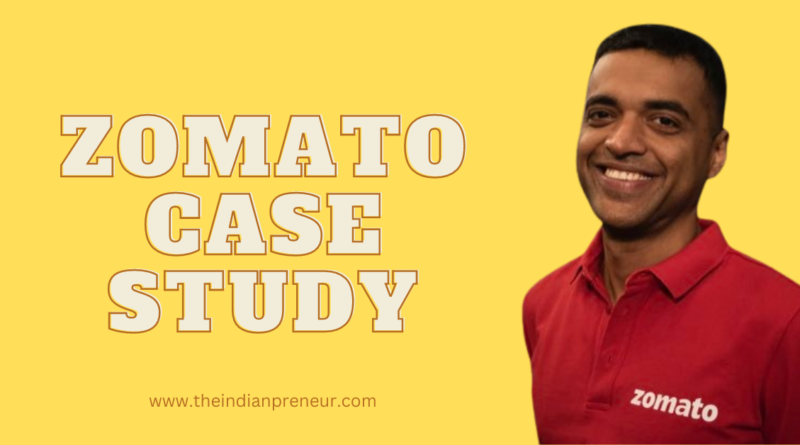
Zomato Case Study: History, Valuation, Product, Services & Growth
Zomato is an Indian restaurant aggregator and food delivery company that was founded in 2008. Initially, the company started as a simple platform to help people discover new restaurants in their area, but over time it has evolved into a major player in the food delivery industry. Today, Zomato operates in more than 25 countries and has a user base of over 90 million.
Background: Zomato was founded by Deepinder Goyal and Pankaj Chaddah in 2008. The idea for the platform came about when Goyal and Chaddah were working as management consultants and found themselves frustrated with the lack of good restaurant options in their area. They decided to create a platform that would allow users to discover new restaurants based on their location, cuisine, and price point.
Initially, Zomato operated as a simple directory of restaurants, but over time it began to add more features such as user reviews, ratings, and menus. In 2011, Zomato launched its mobile app, which allowed users to access its services on-the-go.
Zomato’s Business Model: Zomato’s business model is based on a combination of restaurant discovery and food delivery. The company generates revenue through various means such as advertising, commissions on food orders, and subscription services.
Zomato has a two-sided platform that connects restaurants with customers. Restaurants can list their menus and prices on the platform, and customers can use the platform to discover new restaurants, read reviews, and place orders. When customers place orders through the platform, Zomato takes a commission on the sale.
Zomato also generates revenue through advertising. Restaurants can pay to have their listings promoted on the platform, which can help them reach more customers.
Finally, Zomato has introduced a subscription service called Zomato Gold, which gives users discounts on food and drinks at participating restaurants.
Challenges Faced by Zomato: One of the biggest challenges faced by Zomato is the intense competition in the food delivery industry. Zomato competes with other major players such as Uber Eats, Swiggy, and DoorDash.
Zomato also faced challenges in expanding into new markets. In some countries, such as China and the United States, the company struggled to gain a foothold due to strong local competition.
Another challenge faced by Zomato was managing its operations during the COVID-19 pandemic. The pandemic led to a surge in demand for food delivery services, which put a strain on Zomato’s logistics and delivery infrastructure.
Successes of Zomato: Despite these challenges, Zomato has achieved significant success in the food delivery industry. In 2021, Zomato went public with a valuation of over $9 billion, making it one of the most successful IPOs in Indian history.
Zomato has also expanded its operations to more than 25 countries, making it a truly global player in the food delivery industry.
In addition, Zomato has been successful in diversifying its revenue streams. The company’s subscription service, Zomato Gold, has been particularly successful, with over 1.4 million subscribers in India alone.
Conclusion: Zomato’s success can be attributed to its innovative business model, its focus on customer experience, and its ability to adapt to changing market conditions. As the food delivery industry continues to grow and evolve, Zomato is well-positioned to continue its success and expand its reach into new markets.
- Emotional Packaging Design – That Touch Consumer Emotion
- Ritesh Agarwal Biography | OYO Founder
Editorial Team
DM us on Instagram ( @tipindia ) or Facebook to get featured.
Leave a Reply Cancel reply
Your email address will not be published. Required fields are marked *
Subscribe to our newsletter
The Global Hues
World Meets Media

Zomato Case Study: History, Marketing Strategies & Future Plans
How did zomato evolve from its inception to become a dominant player in the online meal delivery market , what sets zomato apart in the realm of online food delivery , what are zomato’s future plans and strategic initiatives .
Imagine you and your team being hungry during a meeting or when you don’t have the strength to cook. What will you do? You can easily order food with a few clicks from your phone. In FY 2023, Zomato has 58 million annual customers on its platform. Zomato began as a small restaurant search and discovery website in 2008. It has now become a giant player in the online meal delivery market. This case study explores Zomato’s journey from development, its investors, creative business strategy, marketing tactics, difficulties faced and future goals.
Evolution of Zomato
Deepinder Goyal and Pankaj Chaddah incepted Zomato in the year 2008. They both are IIT graduates. They were working with Bain&Co. in New Delhi before they launched Zomato. It eased the process of food delivery and eating out. The current market value of Zomato is 1172.92 billion (as of 10 January 2024). According to the co-founder, Pankaj Chaddah, the vision of Zomato “ is to be the global platform for people looking for food locally .” Zomato provides concrete information, menus, and user reviews of the restaurants. Below is a timeline that showcases the growth of Zomato.
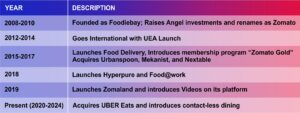
| Founded as Foodiebay; Raises Angel investments and renames as Zomato | |
| Goes International with UEA Launch | |
| Launches Food Delivery, Introduces membership program “Zomato Gold” Acquires Urbanspoon, Mekanist, and Nextable | |
| Launches Hyperpure and Food@work | |
| Launches Zomaland and introduces Videos on its platform | |
| Acquires UBER Eats and introduces contact-less dining |
How many investors does Zomato have?
Several well-known investors have invested in Zomato. One of the notable examples of this is Info Edge India, which gave Zomato $16.7 million in its early years. Sequoia Capital, Alibaba, and Ant Financial contributed to subsequent investment rounds, demonstrating investor faith in Zomato’s projected development trajectory. Morgan Stanley and Abu Dhabi Investment Authority are the most recent investors.
What are the unique qualities of Zomato’s business model that contribute to its success?
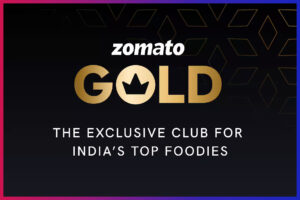
Zomato’s diverse business model includes multiple revenue streams essential to its success. The company began as a platform for listing and advertising restaurants. Later, it expanded into food delivery, live events like Zomaland, subscription services like Zomato Gold, and joint ventures with cloud kitchens and restaurant owners.
The launch of Zomato Gold and Piggybank strengthened the company’s value proposition, and partnering up with Visa, Uber Taxi, and PayPal strengthened the company’s market position. With its foray into the cloud kitchen, Zomato expanded the variety of its income sources and showed flexibility in responding to changing customer demands.
Zomato Gold is a premium subscription service offered by Zomato. It provides members with exclusive dining benefits. The subscribers can enjoy complimentary dishes or drinks at the partner restaurants and receive special privileges and discounts at a wide range of top-rated eateries.
Moreover, Zomato entered the live event market in 2019 and introduced Zomaland. Users pay an entry fee to attend Zomaland; they can indulge in different types of food and witness live musical performances and other acts.
Zomato has an enormous database of restaurants across 10,000 cities in 24 different countries. The company’s target audience is users who try to find local restaurants of various cuisines and restaurants that want their name to reach several people. Zomato’s business has two parts: one is the delivery business, and the other is advertising. Advertising is Zomato’s major source of revenue: the restaurants can promote their banner on the site to get better visibility and appeal to the larger section of the audience via Zomato.
What are the different marketing strategies used by Zomato?

Zomato’s expertise in digital marketing has played a crucial role in fostering brand loyalty and increasing user involvement. It uses social media sites like Facebook, Instagram, and Twitter to select interesting information related to popular subjects that appeal to a wide range of users. Moreover, the company utilises Google Adwords for its search and campaigns. It targets terms such as ‘food,’ ‘online ordering,’ ‘restaurant names,’ and many others. It also runs Google Display advertisements to target people on applications and websites from third parties.
Memes have become synonymous with Zomato as it has mastered the technique of “meme marketing.” Zomato can generate a lot of organic traffic thanks to its content marketing technique, which helps increase its overall revenue. Furthermore, it capitalises on the popular global events like the Olympics or cultural phenomena such as “Pokemon Go.”
Challenges
Zomato has grown exponentially; however, it also faces its share of several obstacles in a market that has become more and more competitive. The company continuously innovates and sets itself apart from its competitors, like FoodPanda and Swiggy. Moreover, it faces enormous obstacles in navigating the intricacies of last-mile delivery, controlling operational expenses, and maintaining service quality.
If we talk about the challenges in the past, Zomato faced backlash from restaurant owners for its Gold Program. The program gave immense amounts of discounts to the customers and kept the restaurant owners in the backseat. The owners incurred massive losses and didn’t get any share of the profits the aggregators generated through the program. It kick-started a #LogOut Campaign against Zomato.
What are the Future plans for Zomato?
Zomato plans to diversify into the catering business by leveraging its established network of restaurant partners as a part of the broader strategy to service large orders. Moreover, it looks to add more offerings to its loyalty program, Zomato Gold. It is done despite the concerns about profitability. Furthermore, Zomato introduced the multi-cart feature, which allows users to order from multiple restaurants simultaneously.
Bottom Line
Zomato’s path from a modest restaurant search website to a global meal delivery giant reflects the incredible evolution of the online food sector.
Founded in 2008 by Deepinder Goyal and Pankaj Chaddah, Zomato has become a dominant force in the online meal delivery industry, with 58 million users served annually as of FY 2023. The company’s success can be ascribed to its wide range of revenue sources, effective marketing techniques, and extensive worldwide restaurant database. Zomato is still committed to diversifying its business and strengthening its user base despite several obstacles and criticism regarding the discount initiatives.
Read More Case Studies:
- Paytm Case Study: Evolution, Investors, Business Model, Future Plans
- Case Study Of Netflix: Evolution, Marketing Strategy And More
- Tata Group: An Indian Empire worth $100 billion
Related Posts

CEOS IN THE WORLD OF SOCIAL MEDIA

Spreadme Digital: Helping Businesses Grow Via Delivering Impeccable Marketing Solutions

5 Ways to Advance Your Career With an Online Engineering Management Program
Leave a reply cancel reply.
You must be logged in to post a comment.
Shareholders
Info Edge India owns the largest share in Zomato. This company is a media and internet firm and owns a 23.9% stake in the company.
Some of the major shareholders in Zomato include:
| Sequoia Capital India | 17.8% |
| Alibaba Ant Financial | 10.8% |
| Temasek Holdings | 7.6% |
| Tiger Global Management | 6.1% |
| Fidelity Management & Research | 5.3% |
Did you know?
Deepinder Goyal, the co-founder and CEO of Zomato, owns a 4.3% stake in the company.
Business Model
Zomato provides a treasure trove of information, including restaurant names, addresses, contact details, and user-generated reviews and ratings. This helps the audience discover new and unique restaurants.
Zomato utilises the power of the restaurant depository and delivers food orders from these restaurants. Since almost every major restaurant is listed on Zomato, the users’ ability to switch to different apps is drastically reduced. They deliver food quickly to the address of the customer and charge a small fee in exchange for this service.
Zomato is earning money from a total of 5 segments, they are:
- Food Delivery
- Hyperpure (B2B Supplies)
- Quick Commerce (Blinkit)
- Going-out (Events platform)

Major Competitors
Swiggy is a powerful rival of Zomato, forcing the company to innovate regularly due to the extremely low customer switching cost. As one of Zomato’s primary rivals, Swiggy has cemented its position in the Indian market, posing a strong threat to Zomato’s market share.
Uber Eats is a company that falls under Uber Technologies and serves 60 countries; it is one of the leading food delivery platforms in the world. Zomato has acquired Uber Eats’ India operations, but Uber Eats still stands as a formidable competitor to Zomato in foreign markets.
DoorDash mainly serves in the United States and Canada. The company has built a reputation for its extensive restaurant partnerships and robust delivery network.
EatClub operates in 5 metro cities and has eight brands, such as Box8 and Mojo Pizza. They come across as a very strong contender for Zomato.
Here is some important market data of Zomato.
| ₹ 1,41,117 Cr. | |
| ₹ 160 | |
| ₹ 176 / 49.0 | |
| 122 | |
| ₹ 25.2 | |
| 0.00 % | |
| 0.29 % | |
| 0.20 % | |
| ₹ 1.00 |
Financial Highlights
Income statement.
| Revenue from Operations | 2,604.74 | 1,993.80 | 4,192.40 | 7,079.40 |
| Total Expenses | 4,941.60 | 2,468.90 | 6,062.60 | 8,332.80 |
| EBITDA | -2,336.87 | -475.10 | -1,870.20 | -1,253.40 |
| EBIT | -2,421.10 | -612.8 | -2,020.50 | -1,690.30 |
| Profit before Tax | -2,385.60 | -815.10 | -1,220.50 | -1,014.60 |
| Consolidated Profit | -2,367.16 | -812.8 | -1,208.70 | -971.3 |
| Cash From Operating Activities | -2,143.63 | -1,017.90 | -693.00 | -844.00 |
| Cash Flow from Investing Activities | 1,735.22 | -5,243.70 | -7,937.80 | 457.30 |
| Cash from Financing Activities | 358.91 | 6,401.90 | 8,749.80 | -127.40 |
| Net Cash Inflow / Outflow | -49.50 | 140.30 | 119.00 | -514.10 |
Profitability Ratios
| ROCE (%) | -142.88 | -18.27 | -9.82 | -5.37 |
| ROE (%) | -200.51 | -21.84 | -10.79 | -5.79 |
| Net Profit Margin (%) | -85.97 | -38.40 | -25.97 | -12.44 |
| ROA (%) | -76.76 | -14.07 | -9.39 | -4.99 |
| EBIT Margin (%) | -92.95 | -30.74 | -48.19 | -23.88 |
Shareholding Pattern
| DIIs | 15.47 | 13.04 | 9.93 | 8.03 | 7.43 |
| FIIs | 54.88 | 54.72 | 54.43 | 54.61 | 56.74 |
| Others | 29.65 | 32.24 | 35.64 | 37.36 | 35.83 |
SWOT Analysis

- Globally available: Zomato expanded its services to various countries and made a global footprint, encouraging international reach and providing access to diverse markets.
- Leading food delivering services : Zomato has become a leader in the food delivery industry. Its food ordering and delivery services cover more than 1,000 cities and have 14.7 million monthly average transacting customers.
- High Competition – Zomato operates in a highly competitive market, with various food delivery giants like Swiggy, Uber Eats, and EatClub competing for the same customer base.
- Operational challenges – The company faces several operational challenges as a food delivery company, such as delivery delays, food quality issues, and logistical problems. These issues can result in negative customer feedback and reduced customer loyalty, ultimately hurting the company’s profitability.
Opportunities
- Expansion through sustainable practices : The company is capitalizing on the growing demand for sustainable practices by expanding its eco-friendly initiatives.
- Revenue streams: The company diversifies revenue streams and enhances user engagement. Zomato must expand faster than others to stay ahead of the curve.
- New Users: Nowadays, smartphones and internet users have increased tremendously. This will help Zomato gain new users and audiences.
- Fragile Business model: Economic factors can affect consumer dining and food delivery spending, potentially impacting revenue.
- Loss turning segments: The company loses a significant chunk of money in the Quick Commerce segment and thus has to return lower profits at a consolidated level.
Zomato is building brand recognition, global reach, and user-generated content to contribute to its success in the food delivery industry. Zomato faces lots of challenges, constantly innovating and improving its services to stay ahead of the competition. They must maintain their position and take more initiatives to grow and expand their business.
Frequently Asked Questions (FAQs)
- Who is the CEO of Zomato?
Ans. Deepinder Goyal heads the company as the CEO.
- Is Zomato profitable?
Ans. Zomato turned profitable for the first time in the quarter ending June 23. The company produced a profit of INR 2 Crores
- What is the former name of Zomato?
Ans. Zomato was founded as FoodieBay in 2008 by Deepinder Goyal and Pankaj Chaddah.
- How many segments does Zomato report?
Ans. Zomato has 5 segments, namely – Food Delivery, Hyperpure, Quick Commerce, Going-out, and Others
- Is Zomato used outside India?
Ans. The company is operational in Indonesia, Sri Lanka, and UAE.
Disclaimer: The securities, funds, and strategies mentioned in this blog are purely for informational purposes and are not recommendations.
Related Posts

ICICI Vs HDFC Bank: Which Has Larger Market Capitalization?

Dabur Case Study – Business Model, Financial Statements, & Swot Analysis

Bikaji Foods Case Study – Product Portfolio, Financial Statements, & Swot Analysis
Pocketful is an advanced trading platform that empowers traders with cutting-edge technology. we provide innovative tools and resources to make trading more accessible and practical., quick links.
- Open an Account
- Pocketful Web
- Pocketful App
- Investment Tool
- Trading Tool
- Support Portal
- Referral Program
- Calculators
- Stocks Pages
- Government Schemes
- Index Heat Map
- Stock Screener
- Mutual Funds
- Terms & Conditions
- Policies & Procedures
- Privacy Policy
- Press & Media
We are a concern of PACE Group. Pocketful is an investing platform that helps people be better investors. Pocketful unlocks the discoverability of new investment and trading ideas.
Join the waitlist.
Add your details and start your journey toward a better future with Pocketful in your investing career.
You have successfully subscribed to the newsletter
There was an error while trying to send your request. Please try again.
eCommerce & CMS

- Know who we are
- Our Executive Team
- Client Speaks
- Vision and Mission
- Infrastructure
- Certifications and Alliances
- Company Profile
- Partner with Us
- Development Process
- Delivery Methodologies
- Pricing Methodologies
- Quality Policy
- Confidentiality
- Job Opportunities
- Life @Prismetric

360° Zomato’s Marketing Strategies: A Case Study
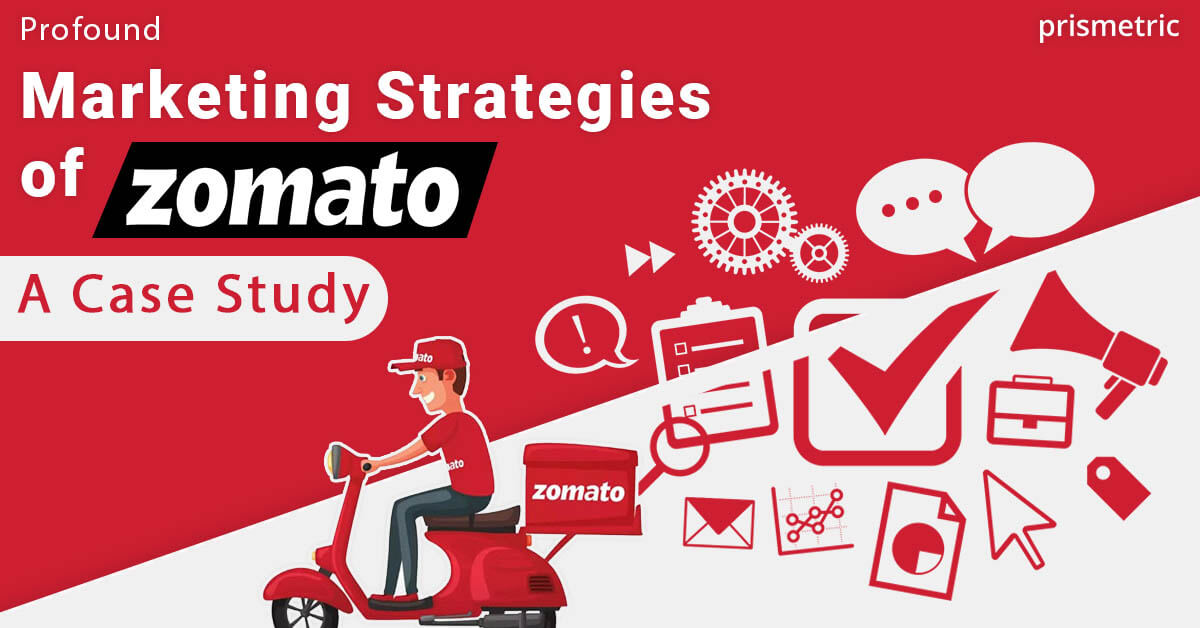
“If something does not go as planned, then the core team of Zomato is always ready to pick it up and go through the same afresh, making the necessary changes.” – Deepinder Goyal, Co-founder, CEO, Zomato
This quote by Mr. Deepinder Goyal perfectly defines the character of Zomato as an organization. The leading food delivery company began in 2008 as a discovery and reviews platform named Foodiebay. After 13 years since its inception, the global food tech behemoth has a strong presence in 16 countries. Moreover, in 2021, Zomato created history by becoming the first-ever food delivery company to go public.
One of the main reasons behind this tremendous rise in stature has been Zomato’s impeccable digital marketing strategy. Whether riding on the latest social media trends or being the flagbearer by starting some ‘never-seen-before’ and personalized marketing strategies, Zomato has always stuck the right chord with its target audience.
Therefore, to take a ‘leaf out of Zomato’s book,’ we will analyze the online food delivery industry’s giant’s marketing strategy and how the company has gone from strength to strength over the years.
Startup Journey of Zomato
Before becoming India’s first food tech unicorn, Zomato – Food Delivery company had its share of zenith and pitfalls. For example, after 9 months of its beginning, Foodiebay became the largest restaurant and food directory in Delhi NCR (National Capital Region). Then, in 2010, it was rebranded to Zomato, and there has been no looking back for the company since then.
After substantial success in Delhi NCR, the food-tech startup didn’t waste any time and started branching out in Ahmedabad, Pune, Hyderabad, Chennai, Bengaluru. And as the solid Zomato marketing plan reaped in rich dividends, the organization extended its services to Sri Lanka, South Africa, Qatar, UAE, UK and the Philippines.
Moreover, after seven years of a mind-boggling run, the company faced major roadblocks in 2015. The organization was struggling for revenues and had to carry out a massive layoff of employees. But then, as we saw in the quote of Deepinder Goyal, the food-tech startup picked itself up from there and in the first half of FY2020, Zomato recorded a whopping 225% rise in its revenue. In addition, in H1FY20, the food aggregator and delivery startup has almost 119k restaurants on its platform, with the future looking bright and shining.
Now, after getting a brief understanding of the journey, it is time to dive deep and see the digital marketing strategy of Zomato and how it aces it every time.
Winning Zomato’s marketing strategies
The rise of Zomato coincided with the rise of digital marketing in India. The internet boom and data were becoming cheaper and accessible inclined the odds in favor of Zomato, and the food tech startup pounced upon the opportunity with both hands.
Visual media to boost marketing
Zomato has been leading the way to use both traditional and digital marketing strategies. For visual or billboard advertisements, it uses punch lines and catchy phrases that connect with the customers and compel them to order food through their platform. While opting for the traditional route, amazing content has a vital role in Zomato’s branding strategy. .
Moreover, the visual marketing strategy gives a much-needed boost to the organization to approach their ‘not-so-tech-savvy’ target audience and get the best out of their on-demand delivery application .
Paid marketing strategy
Despite being a non-permanent marketing strategy, paid advertising is vital and contributes to keeping the engagement up at the platform. In addition, it drives organic footfalls on the mobile app or website drastically and improves the search results.
Zomato concentrates on running the Google ads only to target some specific customers. These ads get displayed along with the organic search results and allow the food tech giant to find a wide range of keywords that they can work on later.
Search Ads:

It is a search advertising method that allows online advertisements to be placed on the website, and these ads show results from the search engine queries. Zomato’s digital marketing strategy uses this method to enhance its online presence even more.

Display Ads:

Zomato uses this method of graphic advertising as it allows the food tech startup to promote itself in multiple formats such as through images, audio, video, etc.
SMS and Email marketing strategy
There are no qualms that Zomato knows a thing or two about nailing the email marketing strategy. It has one of the most compelling and wittiest email marketing strategies. The great subject lines and crisp call-to-action strategies play a pivotal role in maintaining the online food delivery platform’s brand loyalty.
In the subject lines, the food tech startup has created a ‘CV for Biryani’ and has included popular pop culture references from different web series, movies, shows, etc. These subtle inclusion assists in Zomato’s promotion strategies in a seamless way.
Along with email, Zomato has set ‘gold standards’ when it comes to SMS marketing. It presents engaging content according to the buying habits of the customers. This technique also helps in increasing the food tech platform’s retention rate.
Social media strategy
As we have seen earlier, most of Zomato’s target audience falls under the age category of ‘18-35 years. Therefore, it becomes essential for the food tech giant to keep its ‘social media marketing campaigns’ up to the mark. The platform puts an extra effort to stay connected with its audience through some unique content on social media by doing engaging posts.
Zomato’s followers on different social media platforms are:
- Zomato Instagram: 587k
- Zomato Twitter: 1.5M
- Zomato Facebook: 1.8M
- Zomato YouTube: 218K subscribers
Moreover, as per data, 0.73% of the total traffic, and YouTube and Facebook hold the chunk of this traffic.
Meme marketing

Memes are very famous on social media and Zomato, understanding its importance has mastered the art of ‘meme marketing.’ Through this content marketing strategy, the food tech giant generates much organic traffic that eventually helps in boosting its overall revenue as well.
Influencer marketing strategy
Zomato understands the power of influencer marketing thus has given much emphasis to it in the advertising campaign. Whether a macro influencer or micro-influencer, Zomato doesn’t shy away from going the extra mile and uses its popularity to increase its user base.
Rub off effect/humor
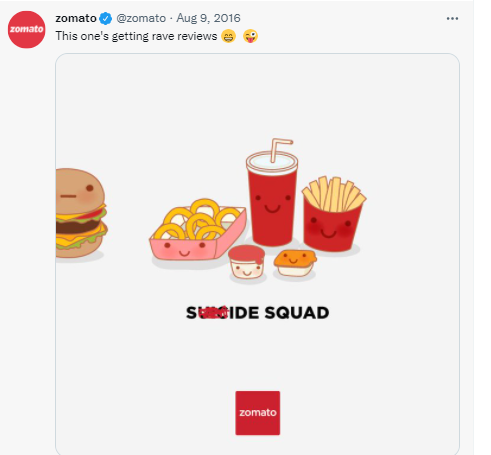
We all know the hilarious take Zomato’s tweets have on different situations. Whether it is an ongoing situation or the situation its customers face in our daily lives, Zomato has some content that will bring a smile to their faces. And its humorous content spreads like wildfire and has a great rub-off effect.
Use of local languages
Along with approaching the micro-influencers, Zomato has taken the ‘hyper-local marketing’ strategy to a new level by promoting its content in local languages. This helps Zomato in reaching more people, thus boosting their trustworthiness.
Emotion marketing
Human beings are emotional, and Zomato’s social media marketing strategy always has an element of emotion in it. More often than not, that emotion strikes the right chord with the audience and helps increase the overall engagement rate.
YouTube marketing
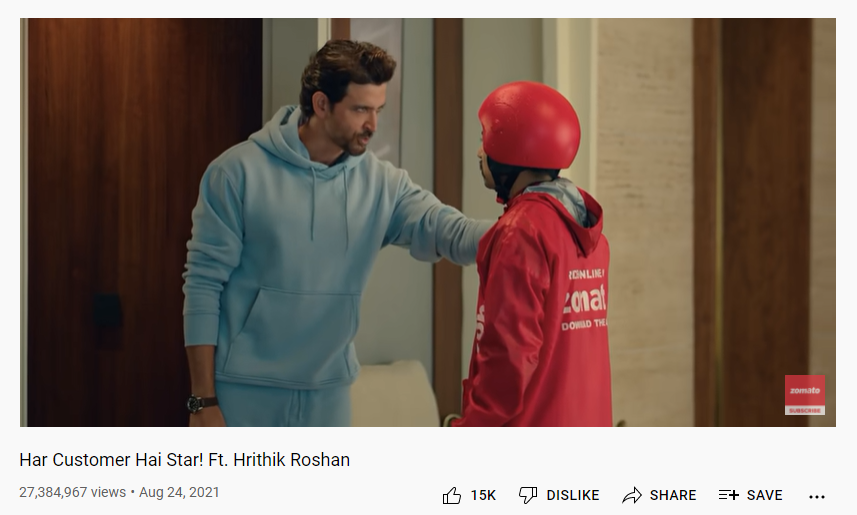
Zomato has always been a front runner in understanding the importance of videos and has been utilizing it to its benefit on the YouTube platform. You often will get to see short, crisp, and non-skippable video advertisements of Zomato on YouTube that have a subtle ‘call-to-action’. Thus, it will be safe enough to say that video advertisements hold an important place in Zomato’s digital marketing strategies.
SEO Strategy
In today’s business world, where everything runs on data and analytics, it becomes impossible to do away with SEO strategies. However, Zomato fully understands that there are no alternative, competent SEO strategies as it drives around 99.44% of organic traffic and the remaining comes from paid advertising.
It is the foolproof SEO strategy of Zomato that increases the organic traffic number from 66% to 99.44%.

Below are the few methods employed by Zomato to scale up its ‘SEO’ game.
Internal linking
The most common SEO strategy is to link the specific URLs to the keywords. Although it seems very basic, if done correctly, it reaps rich benefits, as we have seen in the case of Zomato. The relevant URLs to the keywords enhance Zomato’s digital media presence and take the promotion strategy to a whole new level.
Here the food tech brand targets many keywords that promote the overall brand.
Targeted keywords
In the marketing plan of Zomato, there are more than 900k keywords that are optimized for SEO purposes. Targeting these many keywords organically gives Zomato an upper hand in SEO that is tough to surpass.
One of the main reasons behind Zomato’s dominant position in the search results is its huge directory of restaurants and food, and it has become a blessing for them. And the directory includes minute details such as the name of the dish, place of the restaurant, its best-selling item, and many more. This data also helps in developing an airtight Zomato promotion strategy.
Website pages
Zomato has over 54 million pages on its website as it allows restaurants to create and maintain their data. In addition, the high number of pages helps increase the SEO of the website. This is because many website pages play a crucial role in getting high ranks on the search engine.
Having authority backlinks
Getting a high number of backlinks from various websites is crucial in boosting domain authority. For example, Zomato has a high domain authority as it gets backlinks from .edu and .gov websites. The food tech giant’s website currently has more than 13 million domains.
Along with its immaculate services, it is the top-class marketing strategies of Zomato that has helped the company to become a brand. We will see some of its top efforts before getting to the details.
Target positioning of Zomato
The target audience of Zomato falls in the age range of 18-35 years to a larger extent. These people majorly love to dine out or prefer food delivered to their homes. Therefore, the ‘Zomato digital marketing strategy’ majorly targets the youth who indulge in exploring new restaurants or new foods with their friends and colleagues.
Segmentation of Zomato
Along with figuring out the target audience, Zomato doesn’t shy away from bringing in experiential events and spreading positive vibes around food during the segmentation process. It does this by participating in entertainment and multi-city food carnivals. Moreover, it launches food both in-home delivery and dines out.
Through its segmentation marketing strategy, Zomato implements a multi-channel approach on the offline marketing channel as well. This helps the food tech organization to expand its user base outside its target audience as well.
Things that make Zomato digital marketing strategy unique
Now you might be thinking that in the digital marketing strategy of Zomato, there is nothing that is ‘out of the box. On the contrary, it does the same thing as you would expect from a normal company that has an online presence. Thus, here we will discuss those important aspects that make Zomato’s advertising strategy unique.
Offering diversified things
One of the greatest USPs of Zomato is that it believes in giving ‘something extra’ to its customers. So along with giving satisfactory food delivery services, it never fails to brainstorm on things that will enhance the overall app experience of its customers.
One such idea was to launch Zomato Gold in 2017. It was a premium service that offered countless discounts to the users against a monthly subscription fee. It turned out to be a ‘masterstroke’ and emerged as one of the leading app monetization strategies .
Then in August 2018, Zomato started Hyper pure. This initiative ensured that the supplies to the restaurant were highly hygienic and of high quality.
On-time or free campaign
Following the model of Domino’s Pizza, Zomato began the ‘On-Time or Free’ campaign in December 2019. And it went a step further than Domino’s as Zomato’s this campaign was applicable on all its food and not just Pizza.
The customers could avail themselves of the ‘On-Time or Free’ by tapping on a button on the Zomato app. And after that, if the food is not delivered on time, they will get their money back. The food delivery service provider used online advertising, TV creatives, and different kinds of social media platforms to promote this campaign.
Acquiring major companies
Since its inception, Zomato has believed in constant innovation. Thus, during its journey, it has followed the ‘constant innovation’ template and acquired different companies such as Uber Eats, Uber Spoon, MapleGraph, Nestable, etc.
Although these acquisitions were not cheap, they helped Zomato give momentum to the brand and innovate it time and again.
Zomato premier league
India is a cricket-crazy nation and Zomato as a brand understands it to the core. Thus, the food-tech startup introduced the Zomato premier league. It was an amazing attempt at gamification by the brand that became a huge hit among the customers. Through this, the brand listed great deals and discounts that were offered by the participating restaurants. In addition, the customers also stood a chance to win further discounts by predicting the winner of the match.
Zomato gold membership program
With a view to enhancing customer loyalty, Zomato introduced the gold membership program. The program is a monthly subscription scheme that renders superlative discounts and complimentary dishes to the customers.
This marketing strategy of Zomato became extremely successful and helped the brand increases its revenues. Until July 2021, Zomato gold membership is available in 41 cities in India and 9 countries worldwide.
What is the future of Zomato?
Whether for shopping or food or medicinal treatment, etc., the shift to mobile app s has been tremendous, and this m-commerce trend is here to stay. Thus, the future of Zomato and its contemporaries is bright and is bound to get better from here. Moreover, the ongoing coronavirus pandemic has been a fuel that has escalated the speed of Zomato’s expansion. As people are adjusting to the ‘new normal, they have been more inclined to order food online, which has increased the revenue and user base of Zomato. For example, its revenue from operations rose to 140% in the second quarter of FY21 and has reached a whopping number of Rs.1024 crore.
Popular Blogs for Entrepreneurs
- Best on-demand business model for your Startup
- Profitable rental startup ideas to invest in 2023
- How to get the best for your on-demand delivery app?
- Top must-have features in your mobile app
- How to start a Cloud Kitchen startup?
- How to start a meal-prep startup?
Final words
An entrepreneur can learn a plethora of things from Zomato’s digital marketing strategies. The online organization has mastered staying relevant and being a customer-centric company. Moreover, if you as an entrepreneur have a similar idea, always opt to hire a team of dedicated developers for the best results.
In addition, along with developing an app food delivery app like the Zomato – leading online food delivery service provider, there are other trending app ideas that business houses and start-ups should consider before putting everything into practice.

With in-depth knowledge in International Business Management and Information Technology, he can effectively craft business enhancement strategies and can skillfully untangle technical complexities. This has laid the path for him as the Co-Founder and MD of Prismetric . Writing about the new age technology and sharing his thoughts on the continuously evolving business trends keep him content.
Get thoughtful updates on what’s new in technology and innovation
Related Blogs
- Cost to develop a Food Delivery App
- Cost to build a 10-minute grocery app
- Cost to develop a Restaurant App
- Cost to build an Alcohol delivery app
- Cost to develop a grocery delivery app
- Cost to build an on-demand fuel delivery app
Streamline your operations and grow your business by getting the best application built
Our Recent Blog
Know what’s new in Technology and Development
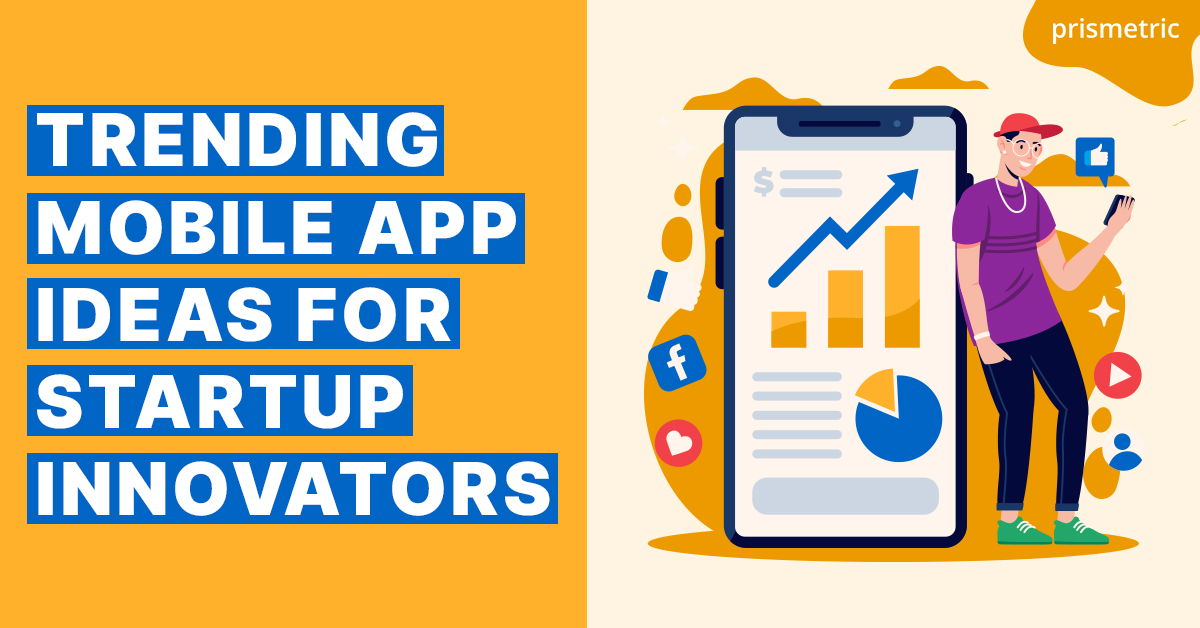
Trending Mobile App Ideas for Startups in 2024 & Beyond

Beyond the Pitch Deck: Crafting a Compelling Mobile App Business Plan for Your Startup
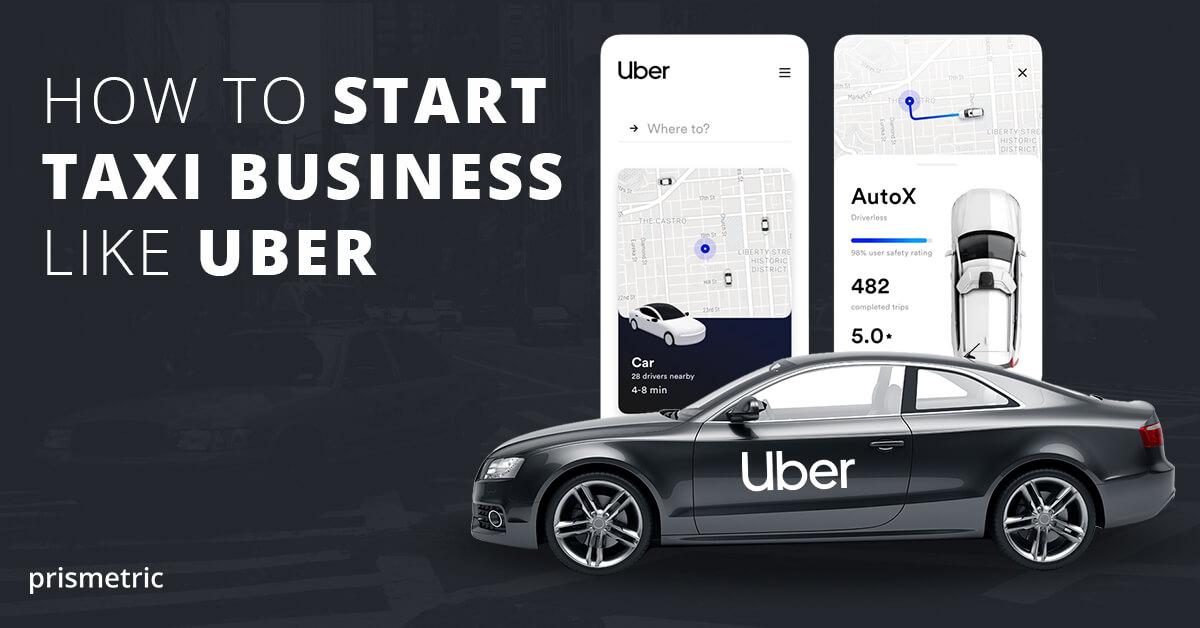
How To Start A Taxi Business Like Uber in 2024?
Have a question or need a custom quote.
Our in-depth understanding in technology and innovation can turn your aspiration into a business reality.
Please leave this field empty.
Connect With US

How Zomato Survived the Pandemic-A Case Study

Seema Banerjee
Life, as we know, ended with the advent of 2020. It ushered in a new and scary era by introducing us to COVID-19 . This puzzle remains unsolved even after toils by the best minds in the world. We now talk about life before and after the pandemic.
Nothing remains untouched, and one of the most affected is the food business , particularly food delivery . Zomato is the forerunner in this industry in India. And it is only apt that their business performance is seen as an example.
Zomato—Before Pandemic Zomato—During Pandemic Zomato—Now Zomato—Steps Taken For Continued Business Zomato—Ventures Zomato—FAQ's Zomato—Conclusion
Zomato—Before Pandemic
Zomato had reported a revenue of $192 million on a loss of $277 million in the financial year 2018-19. Then, in 2019-20, it doubled its earnings (revenue) reporting levels of $394 million on a loss of $293 million.
Zomato acquired competitor Uber Eats in January 2020 gaining market share to increase GMV by 108%. In figures, the GMV increased from $718 million in financial 2019 to $1.49 billion in the financial year 2020.
But as COVID-19 gained pace in the country, India responded starting a lockdown in March. The food delivery GMV (Gross Merchandise Value) was at an all-time low, reducing by 80% in the last week of Match 2020 (comparing with GMV at its peak in mid-February 2020).
Zomato—During Pandemic
In June 2020 quarter, Zomato had a revenue of $41 million on a loss of $12 million. These figures show the evident effects of the COVID-19 pandemic sweeping across India. But a positive impact was that the burn rate was reduced. It was expected to stand under $1 million and by July 2020 the monthly revenues started showing a steady rise reaching 60% of pre-COVID levels.
Following Goyal’s prediction, the recovery has now been over 80% in August 2020 and finally reached pre-COVID levels by October 2020. He further expects the food delivery business to grow 15-25 percent month on month. He informs that Zomato has done 9.2 crore deliveries since March with no reported transmission through delivery. The road through slow and rocky, persistence has still yielded results.
Zomato—Steps Taken For Continued Business

Zomato recognized that they have to take initiatives for survival in the hostile business atmosphere. There were a series of steps taken that lay down an example of a strong spirit and determination. We look at a few of these:
- Contactless Dining: Introduced in India and eight other countries, patrons were offered contactless dining when they visited a restaurant. People were able to enjoy the dining experience without any interaction with restaurant staff or touching menu cards.
- Contactless Food Delivery: A similar concept to contactless dining, here food was delivered without direct interaction with the delivery person. The food is left at an agreed point and picked up by the customer.

- Temperature checks: All delivery partners have their temperatures checked when they reach the restaurant to pick up delivery before the order is handed out. This is then mentioned on the receipt for the benefit and information of the customers.
- Aarogya Setu App: Zomato made it mandatory for all delivery partners to download and use the government-backed Aarogya Setu app.
- Mask and Sanitizers: Mask and sanitizers have become a must at all times and for everyone. Zomato provided washable and reusable masks as well as sanitizers to all working delivery partners. Where they were unable to do this, they have reimbursed partners upon purchase o masks and sanitizers.
- Training: All delivery staff was provided training on contactless delivery to ensure bot the parties remain safe during harsh times. This also included training on safety measures as recommended by WHO for delivery as well as personal fronts.
- Restaurant safety: Zomato ensured that all partner restaurants implemented safety measures. They also shared all information with the user so they are assured of the safety measures and hygiene standards. This helps in making an informed decision. Restaurants also had to issue a declaration that they were following measures.
- Insurance: Zomato has added OPD coverage of up to INR 5000 to cover potential testing costs for partners. In case of infection, they are also covered by insurance for medical expenses and any loss of earnings.
- Disabling Cash on Delivery: Cash on delivery was disabled to avoid any contact and safety reasons.

Zomato—Ventures
Zomato’s primary business model has been the food delivery business. But it also had a small niche segment of delivering groceries, fruits, and vegetables. This venture was called Zomato markets.
During the imposed lockdown in March and further, increasing numbers of COVID-19 swept India, people decided to go out of home less and less. The availability of daily essentials via Zomato was a lucrative option as bigger competitors like Big Basket and Amazon struggles to deliver. Zomato was able to deliver with ties to small and medium local shops.
However, once lockdown became relaxed, it faced stiff competition from new and old competitors alike. Eventually, it did exit this business and decided to focus on the food delivery business model as it started reaching pre-COVID levels.
Another interesting venture is Zomato’s Feed Daily Wager program under the aegis of Feed India campaign. It collected over 30 crores during the pandemic for this cause and was able to provide over 65 million meals to the daily wage earners who lost their means to earn.
Also, under this program, they delivered rations kits which would contain up to 100 meals for the family. More than 100,000 of these kits have already been delivered over the pandemic period.

Zomato—FAQ's
What precautions did zomato take while delivering the food.
Some of the precaution taken while delivering Food Products during this Pandemic were-
- Contactless Delivery
- Disabling COD
What is Contactless Delivery?
Zomato launched a contactless delivery option that allowed the customer to opt option for the delivery partner to leave the package outside their home, ensuring no human-to-human interaction and hence lowering the risk of any transmission.
How Zomato educated its delivery partners?
Zomato was involved in continuously educating its delivery partners on hygiene practices (not to touch face, nose, sneeze in the elbow, etc.) to ensure their own as well as the ecosystem’s safety.
Why did Zomato disabled the COD option?
Zomato temporarily disabled the COD (cash-on-delivery) option on its app for safety reasons and to avoid contact between the customers and delivery partners.
What is Zomato Gold Support Fund?
Zomato launched the Zomato Gold Support Fund with the goal of helping out the restaurants that were finding it difficult to support their workers during the pandemic.
How Zomato helped people who were directly affected by COVID-19?
Zomato provided services to the quarantine facilities that were essential during this pandemic. It was very important for Zomato to find more than just a few ways to help the community fight against this pandemic. Zomato teamed up with Apollo Hospitals to deliver food to those who were in isolation wards, in their quarantine facilities.
Zomato—Conclusion
It was unimaginable to think of the world that we live in today. The most important lesson probably is being human and having humanity in these times. All of us need to rise above individuals and support each other as a community.
Zomato has given us an example to follow. It saw its business decline on a slide, but it kept going and persevered. As a company, it tried to branch into other dimensions, albeit without success. But it remained focused and came back strongly in the end as the numbers and performance suggest.
Another factor was the support to the community, it included customers, restaurants, delivery partners, and even people in general as everyone suffered. Zomato has shown grit, determination, heart, perseverance in adverse conditions to come out a winner.
Must have tools for startups - Recommended by StartupTalky
- Manage your business smoothly- Google Workspace
Purplle: Elevate Your Beauty Game with Purplle's Wide Range of Products
Starting from clothes to medicines, everything is within our reach with just a few clicks now in the digital era that we are living in. The same goes for skincare and haircare products, cosmetics, and fragrances. The skincare, haircare, cosmetics, beauty products, and the markets for all of them are
10 Strategies for Cost-Effective Heavy Machinery Shipping
Shipping heavy machinery is a complex process that requires careful planning and strategy to ensure cost-effectiveness and efficiency. Whether you’re relocating industrial equipment across state lines or sending large-scale construction machinery to a new site, managing logistics and costs is essential. This guide outlines ten strategies to help your
Zepto Business Model | How Zepto Makes Money
The convenience of Internet food delivery services was greatly enhanced during the pandemic. The dominant player in the online grocery delivery app and company market is influencing users' habits. Online shopping is becoming increasingly common among consumers. As a result, more and more delivery services, like Zepto, have launched their
Dr. Ryohei Mori Discusses Leading Green Science Alliance and Advancing Sustainable Innovation
Dr. Ryohei Mori, CEO of Green Science Alliance, a group company of Fuji Pigment Co., Ltd., has a rich academic and professional background that spans from the Kyoto Institute of Technology to Harvard Business School. Dr. Mori is dedicated to developing innovative materials and products to combat climate change. In

- Development
- Digital Marketing
Zomato Case Study | Business Model [Success Story]
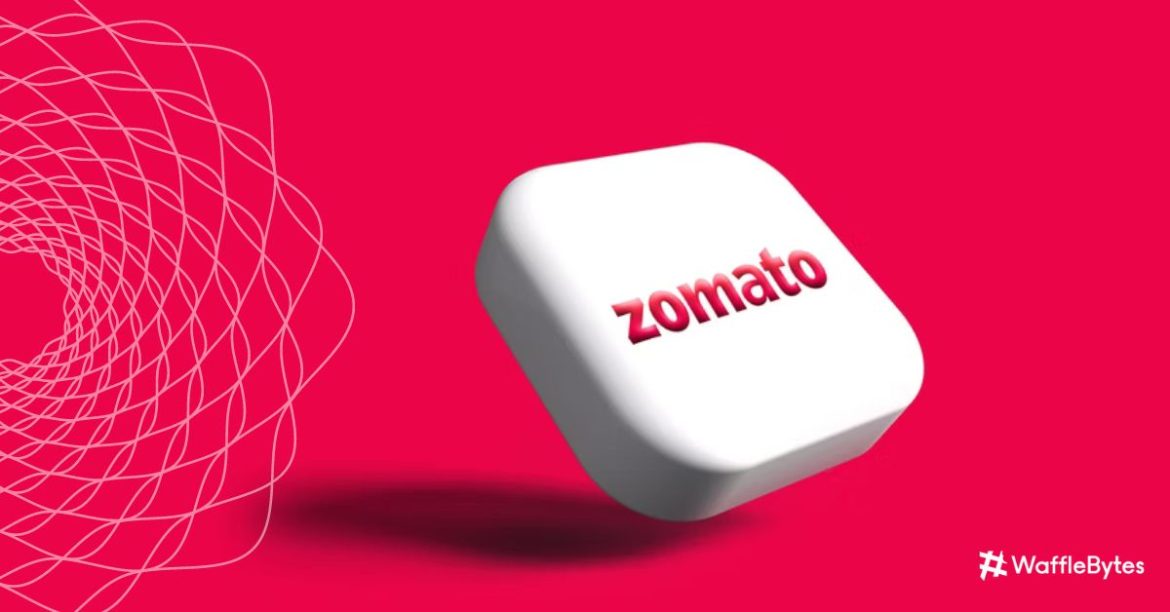
Indians adore their cuisine. They exist solely to eat. But it is the food-tech unicorn Zomato that has changed the way Indians think about food. Zomato has turned food into a profitable business by addressing the concerns of ‘where to dine,’ home delivery of food with the added bonus of huge discounts, and great ‘live’ tracking features.
It started its operations in Delhi-NCR in 2010. Who knew that a simple rebranding of the food directory website, Foodebay would become India’s first food tech unicorn?
To differentiate itself from its competitors, Zomato focused on adding approx. 18,000 new places to eat. At the same time they also decorated many special features, such as special dishes or opening hours”.
In order to be the largest resource in the food supply market, Zomato bought Urbanspoon , a leading restaurant service, to leverage local insights and experience, and to expand its business overseas, looking to the future. Provides a portal to enter Canada and Australia for $52 million. and purpose.
Zomato Case Study Inspire Every Indian Startup
Deepinder Goyal and Pankaj Chadha, both IIT graduates, founded the restaurant aggregator and food delivery company, which now serves over 10,000 cities in 24 countries. Zomato expanded into Sri Lanka, the United Arab Emirates, Qatar, the United Kingdom, the Philippines, Brazil, Turkey, New Zealand, and South Africa.
Zomato has received a lot of support and has raised a lot of money. It has a reputable investor portfolio that includes Singapore-based firms Temasek, Sequoia, Info Edge India, and V Capital. The startup raised $200 billion from Alibaba’s Ant Financial, which has a $1 billion valuation.
Achievements:
- Many listed restaurants: In 2008 it was 4000 restaurants which increased to 94000 in 2013 and currently there are 384,100 in the first quarter of 2015.
- Zomato’s monthly visitors increased to 35 million in 2014 from 11 million in 2013 and 0.015 million in 2008.
- In 2008, Zomato’s annual revenue was 0.06 crores, which increased to 113 crores in 2013.
- Spread over 21 countries around the world.
Zomato Marketing Strategy
The success of Unicorn would be incomplete without mentioning its digital marketing strategy, which increased its popularity and helped it become a household name.
This case study examines Zomato’s growth through digital marketing initiatives. What motivates customers to use the app and place an order? How does the startup keep its customers happy, address their concerns on social media, manage the restaurant, and monitor ratings?
Target Audience:
Zomato’s primary customer demographic is between the ages of 18 and 35. This customer group owns a smartphone, prefers to eat out, and is lazy.
Organic Results in Google SERP
Here is a screenshot of the Zomato search traffic case study in comparison to other restaurants. While real restaurants like Domino’s and Pizza Hut account for less than 1% of search traffic, Zomato accounts for more than 40% of voice traffic and about 2% of top keyword traffic.

Zomato Over Social Platforms
The company also enjoys experimenting with Sprout Social because it allows multiple users to manage a single social media account and handles email and in-app chat queries more effectively. Tasks for follow-up can be assigned quickly and easily.
Monitoring and listening to performance on social media is also easier than ever. Sprout Social’s metrics are also very useful for performance analysis.
The brand emphasises connecting with customers and does an excellent job of it. Check it out for yourself.
One of the most appealing aspects of Zomato’s social media strategy is that it is not just the handlers who provide feedback and attempt to connect with customers. However, the brand does not adhere to any set pattern or strategy. A young team continues to experiment and collaborates in order to maintain a creative edge.
The in-house team works closely with various employees and heads of departments to deliver a correct version and appropriately answer specific questions. That’s not it. Zomato’s social media posts are always in the news. Recently, it gave its social media to delivery boy Sonu after his TikTok video went viral.
pic.twitter.com/YVCiOLrEjK — बडवे महाराज (@utkkut1) February 28, 2020
Business Model – How Zomato Make Money?
In the early days of the company, Zomato used to scan the menus of restaurants and put them on the site and the menu was received by the people. It still follows the same formula but has added other services to its operation. Zomato’s business model is quite different from other food delivery companies such as Swiggy and Foodpanda. Zomato’s key partners are Uber and London & Partners who may launch Zomato in the UK within the expected time frame.
While the company’s main resource is a large database of restaurants in 10,000 cities across 24 countries. The business model is based on providing local restaurant search services, as well as collecting data on food menus, contacts, and providing relevant information to customers. Zomato’s primary channels are its mobile applications and its online website. The company’s target audience consists of users who are looking for local restaurants of various cuisines and restaurants that want their name to reach a large number of people.
Customers who prefer home delivery, as well as database and market research firms, are also served by Zomato. The online service, on the other hand, includes a mandatory rating system. Zomato’s business model has transformed the food industry by incorporating various restaurants and making it simple for people to find restaurants, provide feedback, and check listings and availability based on their preferred cuisines.
Key to success:
- first-mover advantage
- strong content platform
- skilled workers
- Good rating mechanism and social platform
- A grant from an Experienced Source
Also check, Top 12 Food Tech Startups in India
Waffle Bytes
Digital marketing strategy for small business, swiggy: case study and business model, you may also like, canva business model: how canva makes money., candy crush: marketing strategy with psychological appeal, dream11 business model: revenue and operations, leave a comment cancel reply.
Save my name, email, and website in this browser for the next time I comment.
WhatsApp us
Table of Contents
Zomato target audience , zomato digital marketing channels, digital marketing strategy of zomato , influencer marketing strategy by zomato , zomato's collaboration strategy , zomato marketing strategy 2024: a case study.
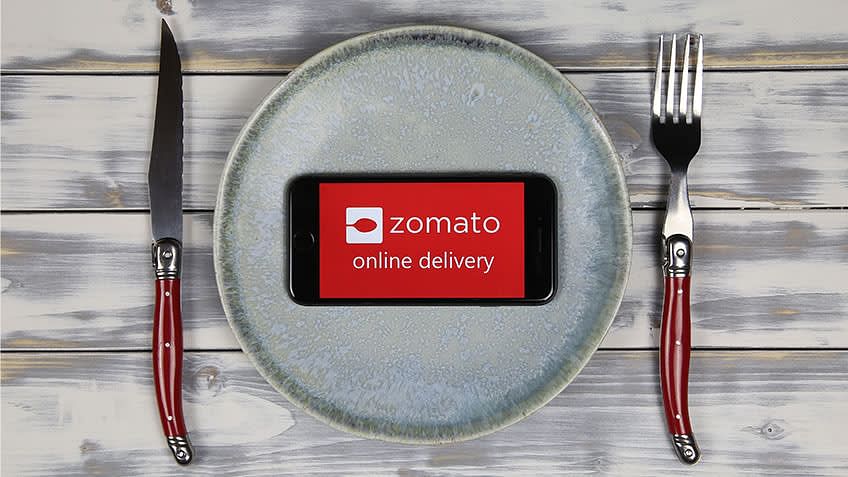
Zomato, when it began, wanted to become the best restaurant search and discovery tool. It offered comprehensive details on more than 1.4 million establishments in 23 countries. There were restaurant names, menu items, pricing, reviews, and other information.
It has evolved into an internet platform for meal delivery over the years. People can now use their app or website to order food from nearby establishments. Delivery personnel from Zomato pick up the customer's order from the restaurant and deliver it to the specified address. While talking about Zomato, let's also look at their marketing approach.
"If something does not go as planned, then the core team of Zomato is always ready to pick it up and go through the same afresh, making the necessary changes." - Deepinder Goyal, Co-founder, CEO, Zomato
Become a Certified Digital Marketer Today
People with smartphones and experience using apps between 18 and 35 makeup Zomato's target market. It aims to attract two customers: those who prefer to eat out and those who want to order food delivered to their homes. These groups frequently overlap. Its Zomato Gold program provides incentives for people to eat out and provides food delivery for those who need it.
People who are employed and need food in their offices, students who live in dorms and need food, those who lack the time or space to prepare their meals, and those who occasionally enjoy eating out are all included in this group.
Zomato utilizes Google Adwords for its search ad campaigns . It targets terms such as "food," "online ordering," "restaurant names," and many others. It aims to attract people who want food delivered to them. It also runs Google Display advertisements to target people on apps and websites from third parties.
On Twitter, Facebook, and Instagram, Zomato is active. It has 726k Instagram followers, 1,899,405 Twitter followers, and 1.42 million followers as of July 2019.
Zomato interacts with its audience by posting on popular subjects. The brand is aware of the nature of its audience. As a result, it promotes material that encourages people to share, discuss, and revisit it. To engage visitors online, it uses popular topics and publishes straightforward pictures.
Become a Certified Marketing Expert in 8 Months
During the 2016 Olympics, Zomato used Twitter to promote its brand. The brand used rings made out of coffee and claimed that if coffee drinking were a sport, they would get the gold medal.
The "Pokemon Go" video game was another current hot subject. Zomato profited from it as well. Zomato used the famous Pikachu to promote its brand on Twitter.
Connecting with the audience was facilitated by posting on popular themes. Users probably don't want to ponder too much while using social media. In actuality, individuals utilize social media to enjoy and view humorous content. Expect your material to be shared when such content appears on their news feed. Of course!
Zomato's digital marketing strategy must be adjusted when new trends emerge. They will need to devise fresh strategies to get the interest of their customers. They are currently performing a fantastic job. They will benefit greatly from it if they put forth a continued effort.
These people are skilled in making the most of the Email Marketing tool. One of the cleverest and most effective tactics is Zomato's email marketing. Zomato keeps customers loyal to its brand by using appealing subject lines and a drive to action.
They ran an email marketing campaign on Amazon Prime Video with the theme of the renowned series Mirzapur, season 2. Subject lines referencing characters from Mirzapur were included by Zomato.
Additionally, it produced a CV for Biryani as part of one of its greatest email marketing methods. Food-related terms like "Curriculum Vitae of Biryani" were featured in Zomato. Additionally, it used the CTA "hire immediately" rather than "order now." That is how Zomato's email marketing strategy excels so well.
Zomato has advanced the concept of "hyper-local marketing" by promoting its material in regional tongues in addition to contacting micro-influencers. This increases Zomato's credibility by enabling them to connect with more people.
Zomato has placed a lot of attention on influencer marketing in its advertising strategy because it recognizes its potential. Whether a macro or micro-influencer, Zomato isn't afraid to go above and beyond and leverages its notoriety to grow its user base.
We are all aware of Zomato's funny takes on various scenarios via its tweets. Zomato provides content that will make its consumers smile, regardless of the issue they are now dealing with or the one they encounter daily. Additionally, its humor spreads like wildfire and has a powerful knock-on impact.
Memes are extremely popular on social media, and Zomato has mastered the technique of "meme marketing" because it recognizes its significance. The food tech firm generates a lot of organic traffic thanks to this content marketing technique, which eventually helps to increase its overall revenue.
Zomato is actively working with the government to ensure that its services can continue to run smoothly during the crisis, in addition to providing support to the thousands of people who are a part of their delivery network by creating a fund for them to cover any income they would have lost due to the crisis. Additionally, they made sure that their delivery partners had masks.
Zomato has always been a pioneer in recognizing the value of videos and using them to its advantage on the YouTube platform. On YouTube, Zomato frequently has short, snappy, and unskippable video commercials with a subdued "call-to-action". It will therefore be appropriate to assert that video ads play a significant role in Zomato's digital marketing strategy .
Zomato as a brand leaves a lasting impression on the consumers, and therefore the brand is unforgettable. Do you want to deep dive into digital marketing case studies of other popular brands? Is it your dream to become an exceptional digital marketer ? Sign-up for our Post Graduate Program In Digital Marketing from SimpliLearn in partnership with Purdue University. The program is co-created with Facebook, and it has Masterclasses from Facebook and Purdue and Harvard Business Publishing case studies.Enrol now and start learning!
Our Digital Marketing Courses Duration And Fees
Digital Marketing Courses typically range from a few weeks to several months, with fees varying based on program and institution.
| Program Name | Duration | Fees |
|---|---|---|
| Cohort Starts: | 8 Months | € 1,699 |
| 8 Months | € 999 |
Recommended Reads
Digital Marketing Career Guide: A Playbook to Becoming a Digital Marketing Specialist
A Case Study on Netflix Marketing Strategy
12 Powerful Instagram Marketing Strategies To Follow in 2021
Introductory Digital Marketing Guide
A Case Study on Apple Marketing Strategy
What is Digital Marketing and How Does It Work?
Get Affiliated Certifications with Live Class programs
Imt ghaziabad digital marketing program.
- Digital Marketing certificate from IMT Ghaziabad
- IMT Ghaziabad Associate Alumni status
Post Graduate Program in Digital Marketing & Analytics
- Post Graduate Program Certificate and Alumni Association membership from IIIT Tiruchirappalli
- Harvard Business Case studies, Capstone from 5 domains and 25+ hands-on course end projects
- PMP, PMI, PMBOK, CAPM, PgMP, PfMP, ACP, PBA, RMP, SP, and OPM3 are registered marks of the Project Management Institute, Inc.
In-depth Business Model of Zomato – 360 Degree Analysis
By Aditya Shastri
By integrating different restaurants and allowing customers to select restaurants, leave reviews and check listings and accessibility according to their choice of food, Zomato’s s business strategy has changed the food business sector. It offers analytical information for numerous eateries in 24 countries around the world. These analyses serve to improve the business of eateries.
We’ll uncover the fundamental characteristics of the Business Model of Zomato in this article and discover how it manages all its activities and generates income. Let’s start immediately by knowing more about the company.
About Zomato
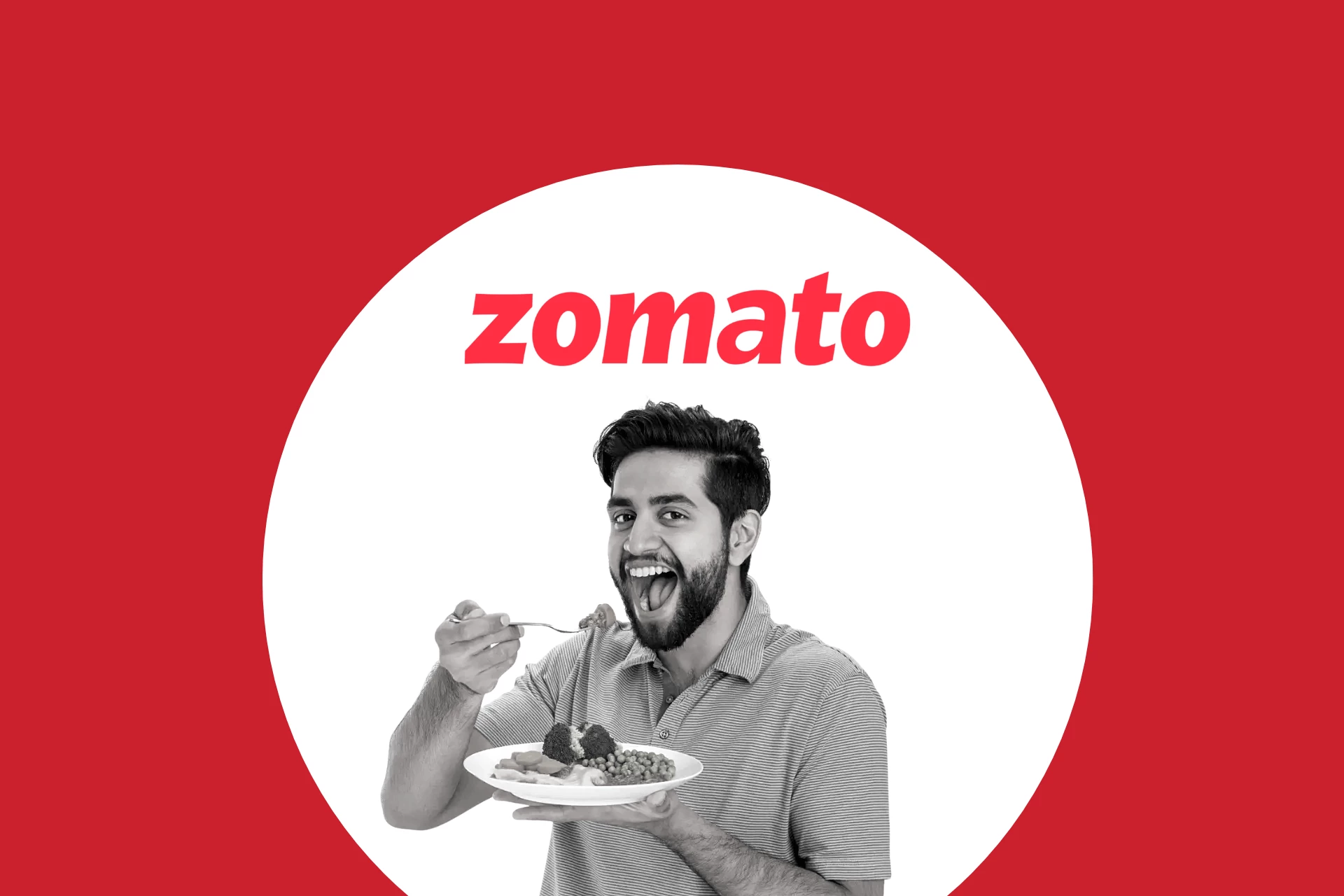
Zomato was started in 2008 by Deepinder Goyal, Pankaj Chaddah. The search and discovery of restaurants and the supply of goods. In more than 24 countries, Zomato now operates. It began from the beginning with the name Foodiebay, which became Zomato in 2010. Zomato extended to Sri Lanka, Qatar, Turkey, Brazil, Indonesia, etc. in other countries.
Zomato said that in all 24 countries in which it operates the company turned profitable. Zomato launched its strategy of 0% commission in a partner restaurant in February 2017. The magazine SmartTech has stated that Zomato has made recurring investments from Info Edge India among the top 25 most promising online enterprises.
Now that we have a brief insight into the company, let’s dive into the heart of this case study – the Business Model of Zomato.
Business Model of Zomato
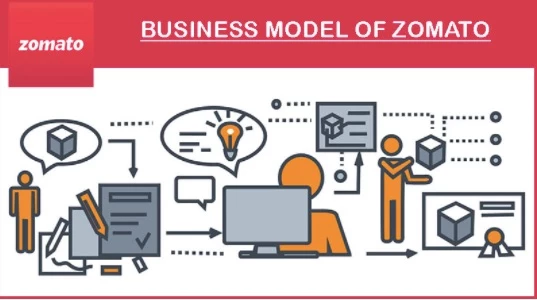
Zomato’s commercial model is very different from Swiggy and Foodpanda’s contemporaries. This application was the innovator of online food applications, therefore Zomato’s acceptance of “online restaurant searches” was a major issue for the market. Zomato’s business strategy is a well-orchestrated plan that includes several factors for the seamless operation of the application. Below are some of Zomato’s important elements
1. Zomato Value Proposition
The company model Zomato offers its clients a selection of values. The aim of Zomato Zomato’s work is appreciated. Zomato focuses on the QAAA model, which promises and offers customers and partners quality, accessibility, accessibility, and portfolio. The following are the values of Zomato, making Zomato unique and admirable:
Zomato works to maintain an impartial platform. Hyperpure constantly helps to keep food supplies high. Hyperpure Zomato’s project offers fresh, squeaky, clean, and high-quality meals to its partnering eateries. The most sought-after food hygiene grade is a quality symbol that is well-known at its partner restaurants. Zomato supply has extended from its beginnings to increasing numbers of towns and cities.
They are vigorously growing their services. Now they give reservations for the tables, cater to companies, and feed India.
The popularity of Zomato Gold speaks to Zomato’s efficiency in several fascinating choices. Zomato always strives for the best and doesn’t leave any stone unturned. They promise affordability without jeopardizing their business. In opening up bands, Zomato believes in providing its clients with new flavours and experiences across regional limits. They deliver the best information to their consumers and assist them to make an informed choice as readable as possible.
2. Zomato Customer Segment
Consumers are the main source of income for a service provider. Zomato’s key customers are consumers and restaurants alike. Those who hunt for different restaurants, according to their budget, locality, and desired tastes, will be able to find different restaurants and a menu of numerous restaurants in their areas. Zomato also has consumers in its kitty who wish to get home delivery quickly. Zomato has given them application facilities. Zomato’s platform also benefits local eateries that need promotional or medium-sized tools for a broad audience.
Zomato contains extensive client data collected by clients who evaluate and rate restaurants. For database firms and market research organizations, who require substantial client data, the brand database is therefore advantageous. They are also customers of Zomato. Examinators are those who give ratings and comments on the food and other services offered by the restaurants and are also known as content producers. These active journalists are also showing images of local restaurants on the Zomato platform.
3. Zomato Revenue Model
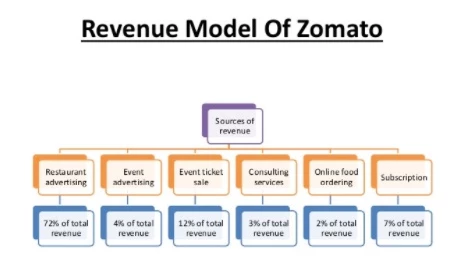
Since its inception, Zomato has increased its global position in the culinary business. Zomato has produced numerous streams of income, and some are given here, helping you understand how Zomatos makes enormous profits by using its business model and diversity.
4. Zomato Target Audience
Zomato’s core consumer is young people between 18 and 35 years of age and those who often want to eat with friends and colleagues. It targets clients who are frequently referring to ratings and reviews and want to decide whether their location is good. It’s the clients who want to have a nice time with their pals and are confident the place’s worth the fee. It also targets foodstuffs that want to share food with people and experience it. They want to know where to obtain the best meals in the city and visit the eateries. All online opinion seekers of restaurants are the goal of consumption.
5. Zomato C hannels
Zomato provides its platform available via several ways of access:
- An Application (smartphone or tablet)
- Official Zomato website.
- The Food Porn (Zomato also built a site for the porn food sector that offers a picture of unusual cuisines from throughout the world).
How Does Zomato Make Money?
Some of the ways Zomato money earns money are listed below
1. Zomato Advertising
Zomato charges restaurants a fee to showcase the restaurant on its site. The higher the hierarchy and the number of times it shows on the top results the more money the restaurant pays Zomato. Zomato also suggests restaurant-specific ads to show on the site such as banner ads and small pop-ups. Restaurants can pay to have their events promoted and various other features.
2. Zomato Delivery Charges
Zomato charges a nominal fee to bring the food from the restaurant to your doorstep. The delivery fee is further distributed among the restaurant owner and Zomato. Zomato then in turn pays the delivery boy a certain fee as his/her salary. GST levied on foodstuffs by the restaurant holder is 18% as mandated by the government. There is no separate GST on delivery charges.
3. Zomato Subscription Charges
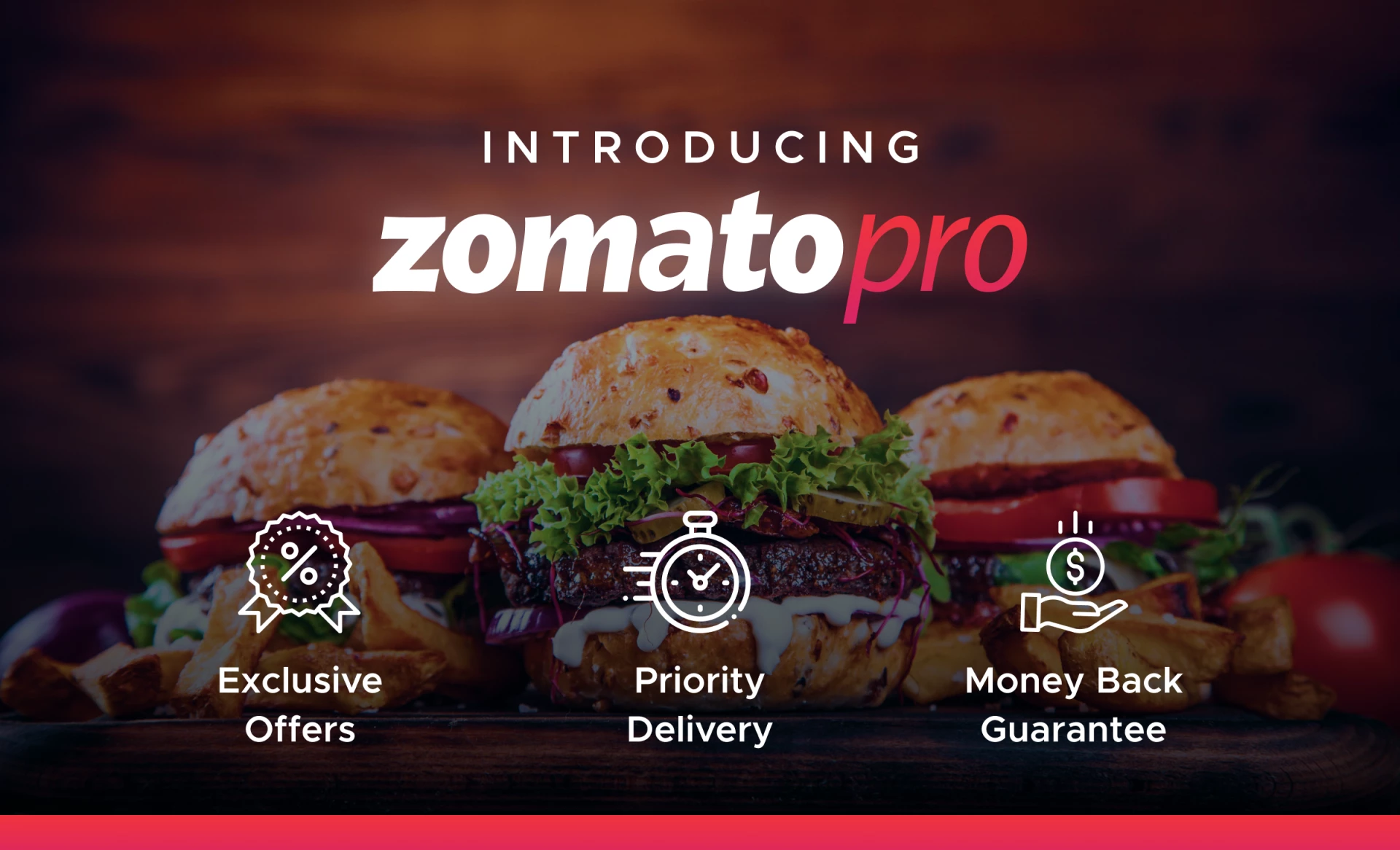
Zomato charges certain fees as subscription charges toToers. This is a marketing strategy to entice the customer to buy more at a considerable rate. For the same, Zomato charges fees. The fees once paid for the subscription are available for a certain time and then can be renewed as the time comes. This is called Zomato gold and Zomato pro.
4. Zomato White Label Access
Zomato also enables services such as Zomato Whitelabel under which they give offers to the restaurants to develop a customized food delivery app. It also works with cloud kitchens and restaurants for consultancy services. Zomato works with select restaurant operators to help in identifying locations for expansions at a minimal fixed cost, but with increased options for the user. It provides the requisite licenses and operational enablement for such restaurant partners.
5. Zomato Kitchens
Zomato partners with entrepreneurs to establish up and manage Zomato Kitchens on several labels to provide kitchen infrastructure services for selected restaurant operators. This helps companies to invest INR 35 Lakh and more in finance restaurants at the correct place. Zomato says that it provides investors a monthly return in the region of INR 2 Lakh to INR 4 Lakh with 180+ kitchens already in operation.
6. Zomato Live Events

Zomaland is one of India’s largest Food Carnivals! We have a wide range of culinary delights, an assortment of fun games, and an amazing artist line-up to ensure your weekend is truly what it should be – filled with Food, Fun, and Frolic!. Zomato charges users certain fees to get entry access to this showpiece event. It is an event where one can find fun, artistic works, and most importantly food varieties. One can find this on the Zomato App and even on PayTm Insider. The details for the same will be mentioned there. Zomato land took place in Pune, Delhi, Bangalore, Hyderabad, Mumbai, Jaipur, Pune, Chandigarh, and Kolkata in 2019. Due to the current pandemic, the event is scheduled online as of now.
Zomato’s Marketing Strategy
Key Partners of Zomato
- London & Partners
To extend its virtual food presence in European countries Zomato has established a collaboration with London & Partners. In charge of supporting Zomato with London & Partners
- Search for a London office location.
- Support for the recruitment process
- Intelligent wage advice
- Recruitment of management
- Positioning of work
- Research into the market
- Consultancy, policy, and compliance with accounting and legal procedures.
For Uber Taxi users Zomato has allied to arrange a mode of transport to their restaurant. The smart invention eliminates the ability to cope with two different applications. Especially when clients strive to review, select and find the ideal dining spot, all clearly and straightforwardly.
- Additional partners
These are payment firms such as Visa and PayPal.
Key Activities of Zomato
- Zomato is the connection between customers and restaurants.
- Zomato has an advertising-based user database reservoir. The company distributes ads for various good-income eateries.
- To continue improvements in customer experience Zomato carries out a variety of actions. It keeps its characteristics according to emerging trends.
- Zomato is aimed at ensuring that the information flows authentically for its users to solve two main questions: what they can eat and where to dine.
- Zomato was also launched in the foodstuffs industry and afterwards introduced a subscription option for food discovery solutions.
- Zomato has a large user database repository and employs various analytical algorithms to find essential data. This is the food for partner restaurants and restaurants’ customer service.
- Zomato also helps restaurants construct their robust app with a framework known as plug-and-play.
With this, we come to the end of the Business Model of Zomato. In the below section, we shall conclude this case study.
By introducing the notion to provide access for different restaurants and cafes, Zomato has entirely revolutionized the functioning of the food and restaurant business. Zomato offers outlets according to the area, selection of kitchens, and customer budgets. It also provides consumers with an online supply service that ensures a seamless and effective “ordering” process.
Zomato also contributes by giving them advice as well as the ability to advertise its business by hooking images and posters in Zomato’s application, to improve the business model of various eateries, bistros, and cafés. In conjunction with several restaurants, Zomato organizes various events and festivals to create not only revenues for itself, but also for the businesses participating. The Business Model of Zomato is properly planned and coordinated, covering several parts of the enterprise as sources of revenue.
We hope that you took the time to read the case study on the Business Model of Zomato and found it informative. Please comment on your proposals. See more of our blogs for more such case studies. In addition, IIDE runs a free Digital Marketing Masterclass Week to examine digital marketing. Visit our website for additional information.
Aditya Shastri
Lead Trainer & Head of Learning & Development at IIDE
Leads the Learning & Development segment at IIDE. He is a Content Marketing Expert and has trained 6000+ students and working professionals on various topics of Digital Marketing. He has been a guest speaker at prominent colleges in India including IIMs...... [Read full bio]
This business model of Zomato is surely an eye catching one. No doubt Zomato is the recent favorite of all those who love ordering food delivered at their doorstep.
Zomato surely knows how to capture market.they understand the need for food delivery at doorstep.
Submit a Comment Cancel reply
Your email address will not be published. Required fields are marked *
Submit Comment
This site uses Akismet to reduce spam. Learn how your comment data is processed .
Related Posts
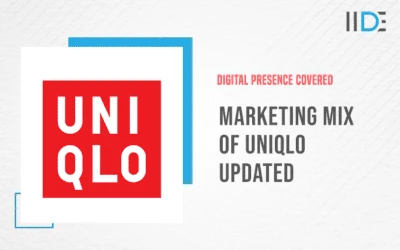
Marketing Mix Of Uniqlo with Updated Company Overview and Explanations
by Aditya Shastri | May 15, 2024
Uniqlo is a Japanese clothing brand known for its high-quality essential pieces formed from the...
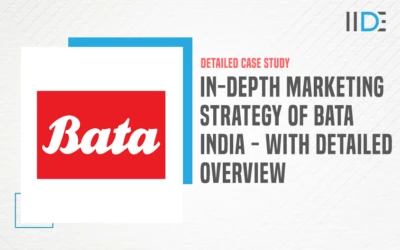
In-depth Marketing Strategy of Bata India – India’s Largest Footwear Company
In this article, we will learn about the marketing strategy of Bata India, the largest footwear...
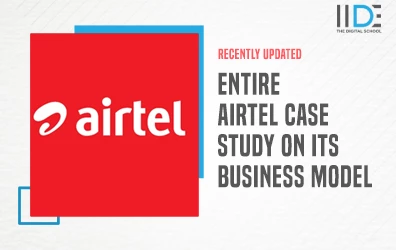
Airtel: Case Study on its Business Model and Marketing Strategy
Bharti Airtel is one of the three telecom giants of India, known for its distinct and engaging...
" * " indicates required fields
I’m Interested in This Masterclass
By providing your contact details, you agree to our Terms of Use & Privacy Policy
Why Attend?
- Live Online
- 1,00,000+ people attended since 2009
- Rs 1999 FREE
- Certificate of Participation
- An exclusive Surprise
Zomato Case Study: Digital Marketing Strategy in 2023
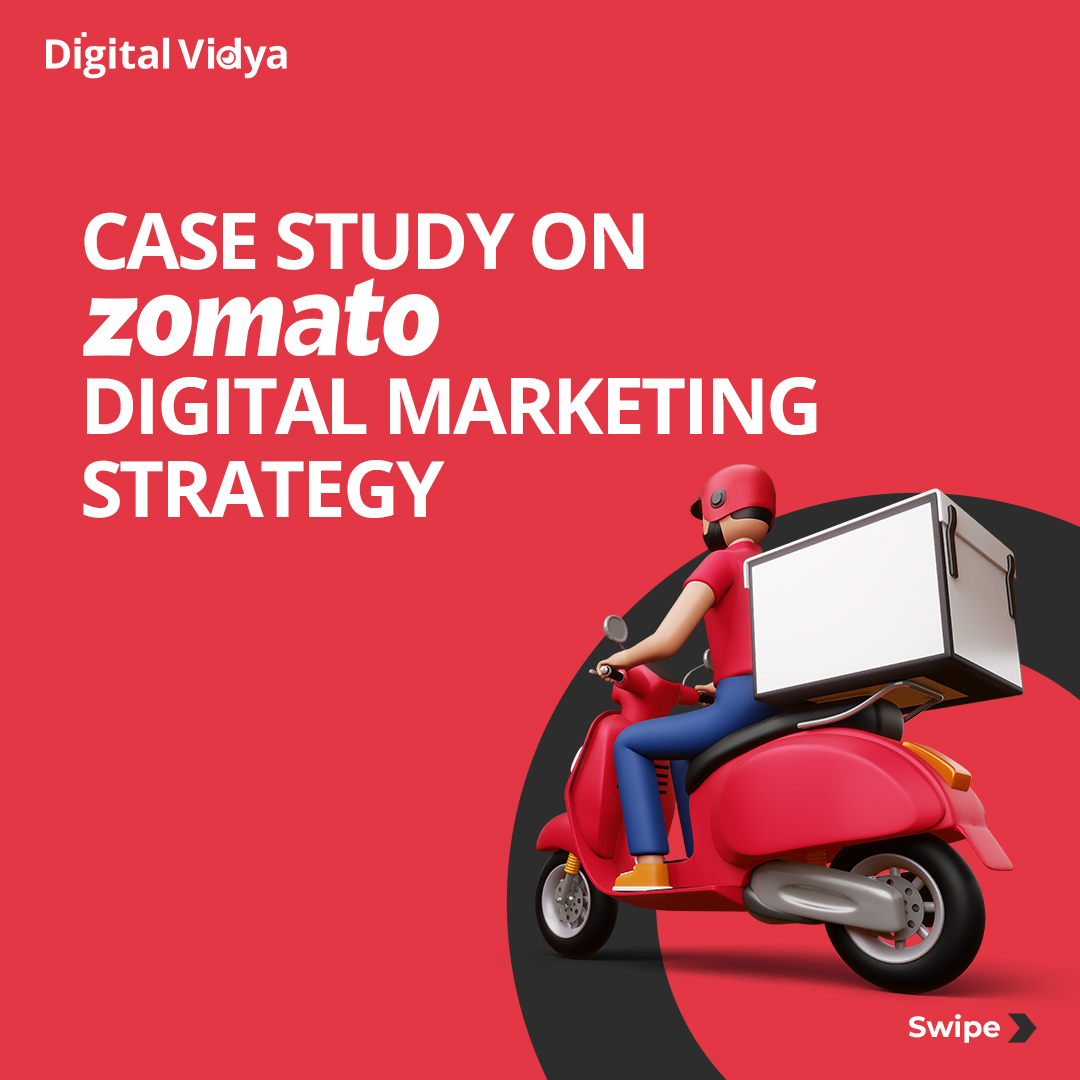
Zomato is a restaurant search and discovery service founded by Deepinder Goyal and Pankaj Chaddah. It currently operates in 24 countries .
This zomato case study analyzes how it provides information and reviews on restaurants, including images of menus where the restaurant does not have its own website and how it allows users to order food online.
Zomato was founded in 2007 by Deepinder Goyal and Pankaj Chaddah . The two entrepreneurs met while working at Bain & Company in Delhi. They quit their jobs in 2010 to focus on Zomato full-time.
By 2011, Zomato had expanded to 10 Indian cities . In 2012, Zomato was launched in the United Arab Emirates (UAE).
The company later expanded to Lebanon, Turkey, Indonesia, Sri Lanka, the Philippines, South Africa, New Zealand, and Australia. Zomato entered China in 2015.
In 2015, Zomato acquired Urbanspoon for $52 million . Urbanspoon was a restaurant search and discovery service founded in 2006. It operated in Australia, Canada, Ireland, New Zealand, the United Kingdom, and the United States.
Zomato raised $210 million from Alibaba Group’s Ant Financial . The investment valued Zomato at $1 billion . Zomato has raised $2.5 billion in financing over 22 rounds since its inception.
Their most recent funding was raised on August 3, 2022, from a post-IPO secondary round.
It has been backed by 28 investors . Fidelity Investments and Franklin Templeton Investments are among the newest contributors.
Zomato has made 14 investments, with their most recent being on April 17th, 2022 when UrbanPiper raised $24 million . Zomato has acquired 15 businesses.
In this case study, we will take a look at Zomato’s business model, objectives, and how they have been able to grow so rapidly. We will also investigate some of the challenges Zomato has faced and what the future may hold for the company.
About Zomato
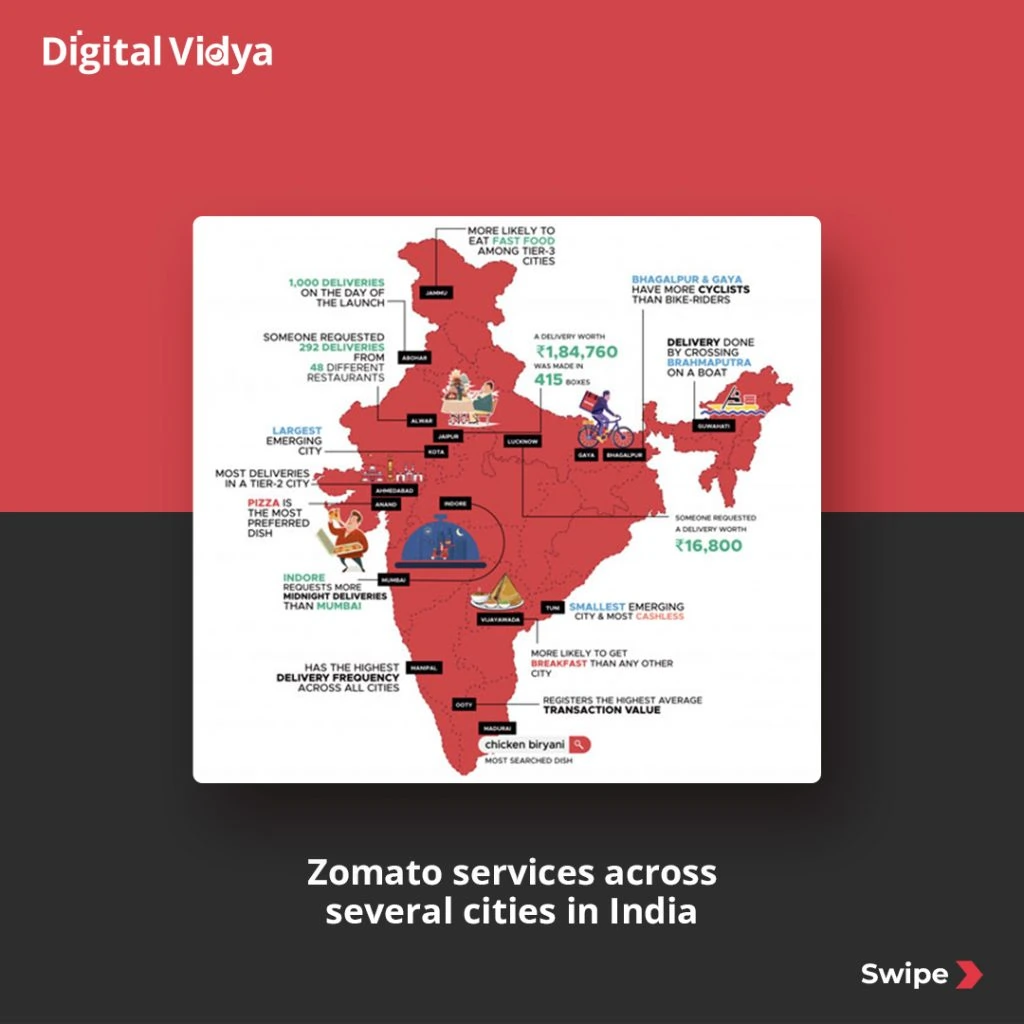
Zomato is a global restaurant search and discovery service founded in 2008 by Deepinder Goyal and Pankaj Chaddah. It currently operates in 22 countries, including India, Australia, and North America.
It features restaurant information such as scanned menus and photos sourced by Local Street teams, as well as user reviews and ratings. T
The company also provides cashless payment, online ordering, white-label apps, table reservations, and point-of-sale systems as a part of its digital marketing moves.
Target Audience
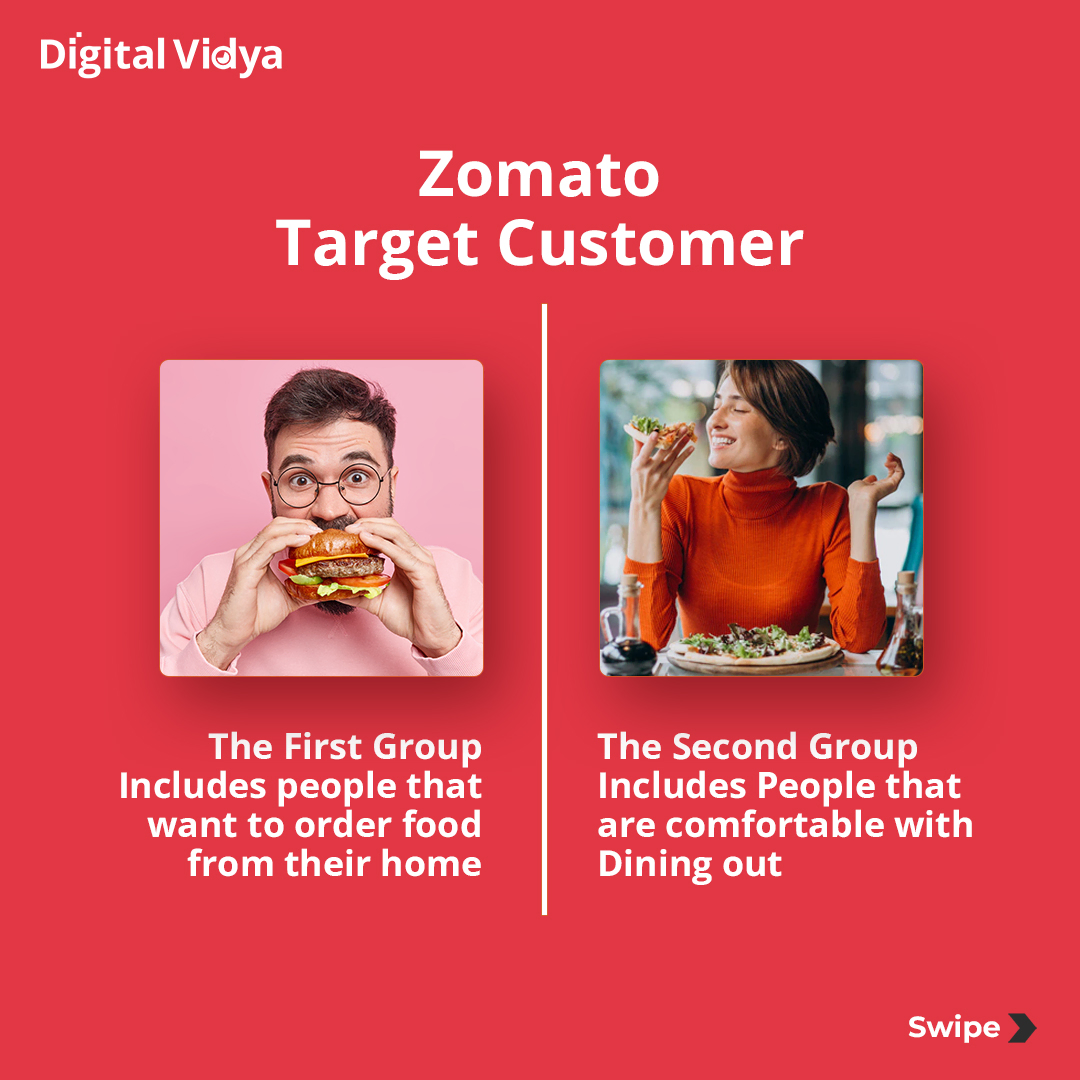
Zomato’s business is based on providing a platform for restaurants to advertise and sell their food online. Zomato makes money by charging restaurants a commission on every order placed through its platform.
Zomato also sells ads to restaurants, which appear on the Zomato app and website.
Zomato’s target audience is people who are looking for a convenient way to order food from their favorite restaurants. Zomato is also aimed at businesses, such as restaurants, that want to reach Zomato’s large user base.
Some of their most common audiences are people who are:
- Too busy to cook
- Want to eat out but don’t know where to go
- Looking for a specific type of cuisine
- New to town and want to explore restaurant options
- Traveling and want to find local restaurants
Objectives of Zomato
Helping people discover great places around them.
The Zomato team visits every restaurant once every three months to ensure data is fresh. Zomato’s vast community of food lovers share their reviews and photos, so we have all that we need to make an informed choice.
Building amazing experiences around dining
Starting with information for over 1 million restaurants (and counting) globally, Zomato is making dining smoother and more enjoyable with services like online ordering, cashless payments, and table reservations.
Enabling restaurants to create amazing experiences
With dedicated engagement and management tools, Zomato is enabling restaurants to spend more time focusing on food itself, which translates directly to better dining experiences.
Accelerate Your Career or Business Growth! Learn & Leverage Digital Marketing Join Free Live Orientation Session Join Free Live Orientation Session
Strategies Adopted by Zomato
1. financial strategy.
Zomato’s model is based on providing a platform for restaurants to advertise and sell their food online. Zomato makes money by charging restaurants a commission on every order placed through its platform.
2. Marketing Strategy
Zomato’s marketing strategy focuses on acquiring new users and getting them to order food on its platform. Zomato offers discounts and coupons to users to encourage them to try the service.
Zomato also partners with restaurants to offer exclusive deals and promotions. We’ll cover key aspects of their digital marketing strategies later in the next section-
3. Growth Strategy
Zomato’s growth strategy is focused on expanding its reach to new markets. Zomato has been aggressively expanding into new countries and cities. Zomato is also investing in new product features and services to attract more users to its platform.
4. Globalization Strategy
Zomato’s globalization strategy is based on providing a local experience to users in every market they operate in. Zomato hires local teams to manage operations in each country.
Zomato also offers localized features and services, such as restaurant reviews and listings in local languages.
Zomato’s Digital Marketing Strategy
1. search engine optimization.
Zomato’s SEO strategy focuses on ranking for keywords related to restaurants and food delivery. Zomato also creates content about restaurants and local cuisine to attract users to its platform.
As of July 2019, it is ranked in India for 816,952 keywords. It has 6,719,882 monthly organic visitors.
- Zomato collects the most important keywords in their field and builds webpage URLs for them. This indicates to Google that Zomato’s sites are relevant to the user’s query. This is an effective method of boosting their website’s position.
- Zomato’s Domain Authority soars because it has 12,274,172 backlinks from unique domains, with 233 of those coming from high authority sources such as .gov and .edu websites. This not only increases Zomato’s Domain Authority but also helps it rank higher on search engines.
- Using keywords on the web pages also helps Zomato’s site rank for those keywords. Zomato uses the keyword “food delivery” on their home page, which helps them rank for that keyword.
2. Social media marketing
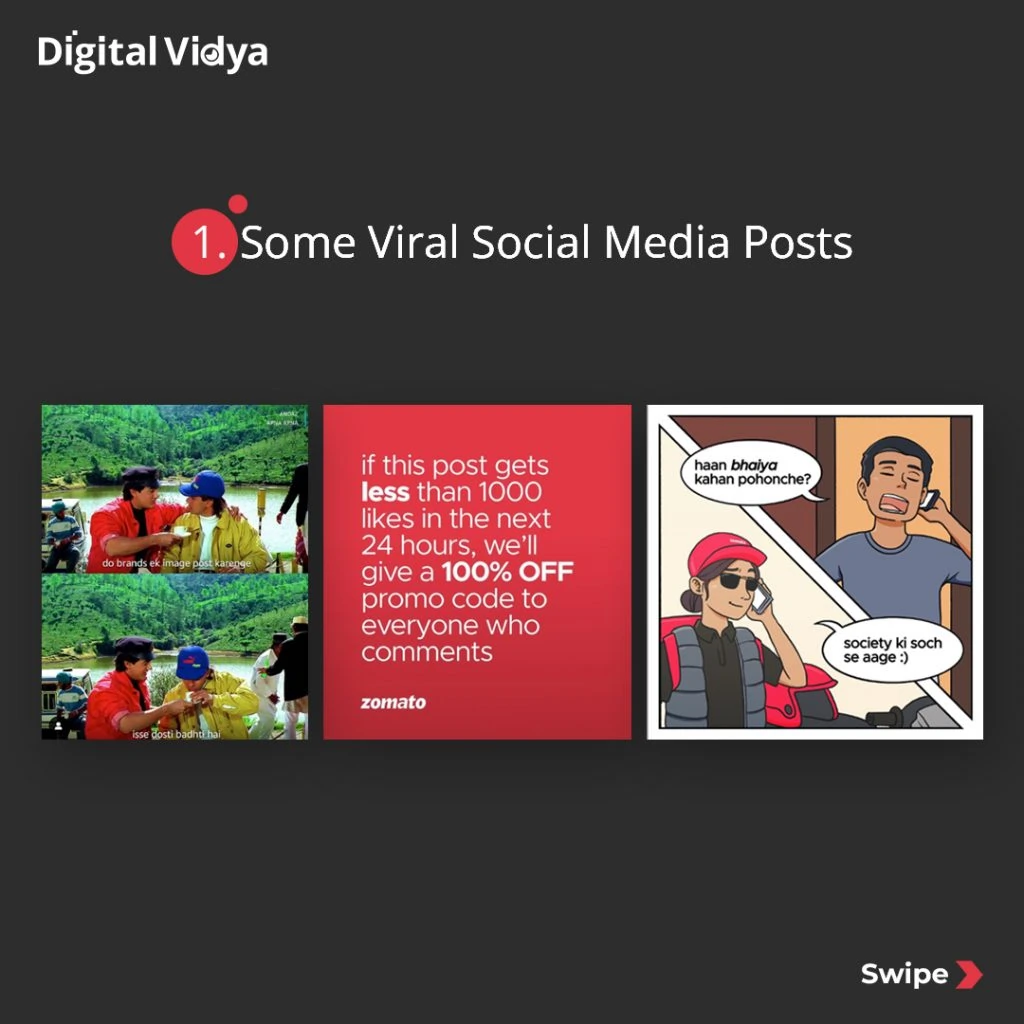
Zomato’s social media strategy focuses on promoting its brand and product on social media platforms. Zomato also uses social media to provide customer support and interact with users.
Zomato has a strong presence on social media platforms such as Facebook, Twitter, and Instagram. Some strategies they use on social media are-
- Posting on trendy topics- Zomato posts on social media about trending topics in the food industry. This helps them to stay relevant and attract new users to their platform. For example, running the Zomato premier league during IPL 2022. The image above shows their post during the 2016 Olympics
- Using influencers- Zomato partners with social media influencers to promote their brand on social media. Zomato has partnered with influencers such as Amit Bhawani, who has over 1 million followers on social media. Zomato has also partnered with celebrities such as Ranveer Singh and Deepika Padukone to promote their brand.
- Fun, Sarcasm, and Comparisons- Zomato’s social media posts are often funny, sarcastic, or make comparisons with other brands. This helps them stand out from other food delivery brands and attract new users.
3. Paid advertising
Zomato’s paid ad strategy focuses on promoting its brand on Google and Facebook. Zomato also uses other platforms such as Instagram and LinkedIn for paid ads.
Zomato’s Google Ads strategy focuses on keywords related to restaurants and food delivery. Zomato also uses Google Display Network to reach new users.
Zomato’s Google Ads campaign has a reach of over 1 billion people.
Zomato’s Facebook Ads strategy focuses on promoting ZomatoGold, Zomato’s premium subscription service. Zomato also uses Facebook to retarget users who have visited their website but did not make a purchase.
Zomato’s Facebook Ads campaign has a reach of over 10 million people.
4. Zomato’s email marketing strategy
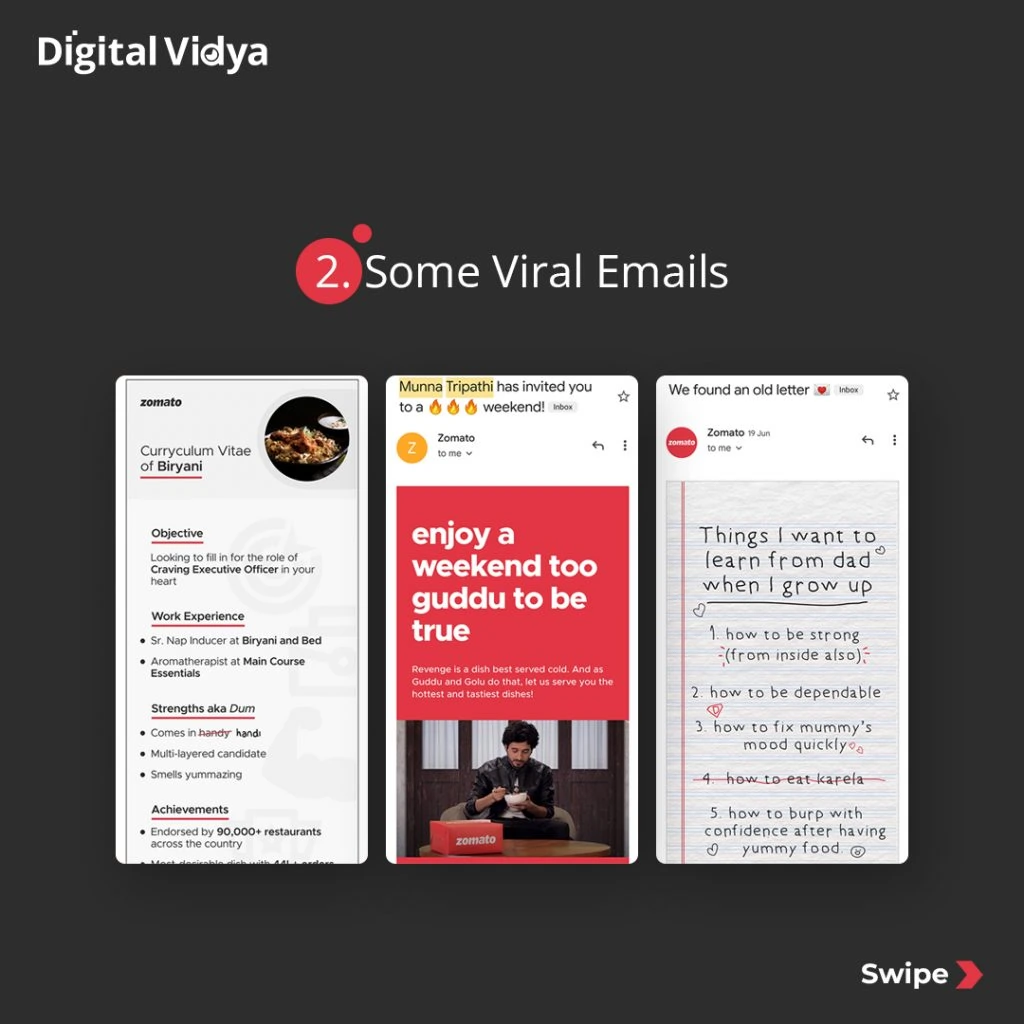
Zomato’s email marketing strategy focuses on sending personalized emails to users. Zomato also uses email to promote new features and services.
Zomato sends out weekly newsletters to keep users updated on new restaurants and deals. Zomato also uses email to send out birthday coupons and other special offers.
5. Zomato’s referral program
Zomato’s referral program allows users to earn Zomato credits by referring their friends to Zomato.
Zomato also runs Referral contests where users can win prizes such as ZomatoGold membership. Zomato’s referral program is a great way to promote its brand and attract new users.
6. Zomato’s content marketing strategy
Zomato’s content marketing strategy focuses on creating helpful and informative content for users. Zomato has a blog where they write about food, restaurants, and cooking tips.
Zomato also has a YouTube channel where they post videos about food and restaurants. Zomato’s content is helpful and informative, which helps them attract new users to its platform.
Focusing on digital marketing channels for potential customers
Acquire the competitors: To be the largest resource in the food supply market, Zomato bought urban spoon for $52 million to enter the US, Canada, and Australia
Simpler review and rating system
Integrating other tools in their marketing strategy has given them a wonderful hike in their business.
Sales promotion: Coupons and price-offs
Direct Marketing: Phone call and direct mail
Implementation by Zomato
Zomato aims to be a place where the foodies hang out. The company has spread in 20 countries with its headquarters in New Delhi, India providing service to over 35 million valued customers per month.
The list of registered restaurants on the website has increased to 384,100 by March 2015.
Facebook, Twitter, and Pinterest are the 3 main platforms that made the base for the success of Zomato with a deep presence among their customers.
Other than that, Zomato has extensively invested a lot in SMO, and SEO and has worked a lot to improve its UI and make it more user interactive. Side by side with a goal to branch globally, they also invest much in TV ads to bombinate Zomato.
Pankaj Chaddah, the co-founder of Zomato agreed, “ads on the mobile app have changed the revenue game for them”. More than 50% of their total traffic comes from their mobile apps.
“Using location-based services to target ads around a consumer’s physical location helps make this decision easier,” said Chaddah.
Sanjeev Bikchandani, co-founder of Info Edge and Zomato’s largest shareholder said, “the firm will focus on segments such as online food ordering, restaurant booking, subscription-based services and billing inside of restaurants”.
Zomato uses different platforms to engage its customers with them.

There is a huge engagement of customers on Facebook. Zomato has a more than 1.9 million strong Facebook communities.

Twitter is a place where Zomato is sparkling. It has more than 1.4 million followers there. Used as a conversation platform with the customers, Zomato is doing a great job in engaging their customers on their page.
T hey, answer all the queries raised over the platform by the customers.
Sharing and updating with all the latest updates is a key point for any organization. Zomato uses its blog as its mouthpiece to share all the latest updates.
The platform shares the food experience with great content to attract customers. The company needs to do a lot of jobs to make its followers on this platform which will certainly work in their promotion.
Results Achieved by Zomato

In August 2010, Zomato got its first round of funding of $1 million from Info Edge, India. And in September 2011, got its second round of funding of $3.5 million from the same financier.
Next year Zomato upraised its third round of another $2.5 million from the same investor and again in early 2013, Info Edge funded a fourth round worth $10 million which gives them a 57.9% stake in Zomato.
Seeing the future and growth of Zomato, Sequoia Capital, and Info Edge, India in November 2013 funded Zomato with $37million. Info Edge now owned 50.1% of Zomato on an investment of INR 143 crores.
The total funding raised by Zomato till November 2013 stands at $53.5 million.
In November 2014, Zomato came up with a fresh round of funding of $60 million at a post-money valuation of ~US$660 million.
This round of funding was jointly headed by Info Edge India Limited and VY Capital, with involvement from Sequoia Capital. This made total funding of over US$113 million for Zomato.
Recently in a fresh round of funding in April 2015, Info Edge, India has invested an amount of Rs 155 crore in Zomato.
Info Edge said in a statement “Being Info Edge’s fair share of Zomato’s recent fundraises of USD 50 million”. Upon completion of the allotment of shares, Info Edge’s aggregate investment in Zomato will be about Rs 484 crore.
When the website was launched, it became popular soon and expanded rapidly, covering many important regions of India including Kolkata, Mumbai, Bengaluru, and Pune by the year 2010.
Apart from being a service provider within India, Zomato.com now has branched overseas in the regions of the Philippines, New Zealand, Qatar, South Africa, Sri Lanka, the United Arab Emirates, and the UK as well.
The website covers a list of over 1,20,000 restaurants across all these regions catering to more than 15 million customers worldwide. With its headquarter in New Delhi, Zomato.com is providing career opportunity to over 350 employees all across the globe.
- Great use of social networking sites to reach out to customers.
- Implementation of a good digital marketing strategy can help a company in faster growth.
Consumers often make quick decisions based on the result of Smartphone searches.
Zomato sends out messages with the right kind of image.
Conclusion!
Zomato not only preaches to be different, but they have also proved it with their work. They deliver the same message but in a new avatar. This makes their social media updates unique, even though the concept is nothing new.
For a marketing strategy to be successful one should know how to engage customers. Zomato’s social media posts are always simple sans industry jargon. It helps them cater to all kinds of audiences. This is the main reason that their posts are truly engaging.
One should be clear about who they are catering to. We hope this Zomato Case Study pdf would have helped you understand their digital marketing strategies. To learn more about internet marketing, enroll in a digital marketing course now.
Let us have a look at some of the Zomato Case Study answers on FAQs-
Question: Why Zomato is so successful?
Answer: There are many reasons for Zomato’s success. Zomato has a strong online presence and uses various marketing strategies to attract new users. Zomato also has a great product and offers features that are not available on other food delivery platforms.
Question: How does Zomato make money?
Answer: Zomato makes money through Zomato Gold, Zomato’s premium subscription service. Zomato also charges restaurants a commission for each order. Zomato also makes money through advertising and partnerships with restaurants.
Question: What are the challenges faced by Zomato?
Answer: Zomato faces many challenges, such as intense competition from other food delivery platforms, high delivery costs, and strict regulations.
Zomato is also facing competition from new players in the market, such as Swiggy. Zomato is continuously innovating and expanding its business to stay ahead of the competition.
Question: What is Zomato’s competitive advantage?
Answer: Zomato’s competitive advantage is its strong online presence and wide selection of restaurants. Zomato also has a great product and offers features that are not available on other food delivery platforms.
Zomato’s competitive advantage allows them to attract new users and grow its business.
5. Is selling on Zomato profitable?
Yes, selling on Zomato can be profitable for restaurants. Zomato charges restaurants a commission for each order. Zomato also has a wide selection of restaurants, which helps to attract new users.
Zomato’s commission structure is flexible, which allows restaurants to maximize their profits.
6. How can I grow my Zomato business?
There are many ways to grow your Zomato business. Zomato offers a wide range of marketing and advertising tools to help you attract new users.
Zomato also has a Referral program where you can earn Zomato credits by referring your friends. Zomato also offers a wide range of features and services to help you grow your business.
Credits: Zomato.com, Wikipedia, techsu.com, Forbesindia.com
Table of Contents
Leave a Comment Cancel Reply
Your email address will not be published. Required fields are marked *
Save my name, email, and website in this browser for the next time I comment.

- Covers all Digital Marketing Techniques

- Digital Media Mastery (with Paid Media Expertise)
Discuss With A Career Advisor
Not Sure, What to learn and how it will help you?
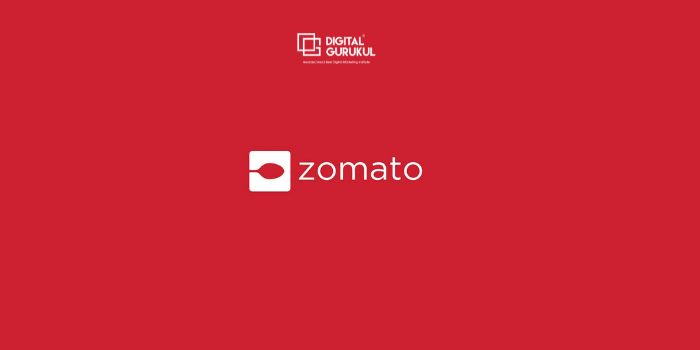
14 Sep 2021
Zomato case study- learn how zomato became a big brand, zomato case study.
This Zomato case study will give you wonderful business insights. You will rarely find a person who has not heard about Zomato if you want to order food online then Zomato is the first name that will pop up in your mind. Zomato is India’s one of the most famous startups, and this case study is solely dedicated to the hero of the Indian startup ecosystem i.e. Zomato. It is one of the trailblazers in the startup world of India which inspired many other people to start their own ventures by using technology.
Recently they brought IPO(Initial Public Offering) on the Indian Stock Market and got a wonderful response from investors, and its market cap crosses 1 lakh crore on its first day of trading.
Zomato is growing exponentially and aggressively since its inception but What is the reason behind its growth? How did they manage to scale a food delivery business despite having numerous obstacles? You will find all of these answers after reading this case study.
About Zomato
Zomato is a restaurant aggregator and food delivery company based out of India. It operates its business in more than 20 countries and around 556 cities & towns in India. Zomato was founded by two IIT alumni’s Deepindra Goyal and Pankaj Chaddah in 2008.
Earlier it was named “Foodiebay” but later it was renamed “Zomato” in 2010. It was started as a website that provided restaurant discovery service, menus, reviews, and other information to the people but later it pivoted its business to a food delivery company and now it operates as a full-fledged food tech company.
Presently it is headquartered in Gurgaon, Haryana. Zomato has achieved tremendous growth in its journey gaining unicorn status in 2015 and till that time its valuation has increased exponentially.
Zomato’s Business Model (Zomato Case Study)
There are various channels and mediums through which Zomato earns their massive revenue, along with food delivery service they have diversified their business to many services like restaurant advertising, restaurant listing, subscription programs, live events, Zomato’s kitchens, white-label access, and many other different sources.
Here’s a list of a brief explanation of Zomato’s business model
1. Restaurant Listing and Advertising
Restaurant Advertising and Listing accounts for a major chunk of revenue for Zomato. Many people get shocked when they came to know that Zomato is an advertising company too for restaurants. The restaurant can advertise its offering by buying a banner ad on Zomato’s App or website in order to increase its visibility and conversion rates. Zomato’s charges a specific amount for banner ads from the restaurant and thus it contributes to a major source of its revenue.
2. Subscription Programs
Another major source of revenue for Zomato is the subscription program. Like every other technology and internet company Zomato also has a vast amount of data of its users like what the user is searching for? What does he/she like to eat? and much other important information. Restaurants pay a subscription fee to access this data and analytical tools which help them to know the consumer preference and interests.
3. Food delivery
The main business of Zomato’s is of food delivery service, it charges commission from restaurants on the order value and now it has started charging delivery charges to the customers for ordering food from its app. The money generated through delivery is split between the delivery partner and the company. This service adds a significant amount to their overall revenue but it is still comparatively low because of the heavy discounts it offered to customers.
4. Zomato’s Kitchen
Another source of revenue for Zomato is infrastructure services. In this service, Zomato provides kitchen infrastructure services to restaurants operators by forming partnerships with them to open and operate Zomato’s kitchens under different labels. It helps the restaurant owner to invest their money in setting up the restaurant at the perfect location under the guidance of Zomato. For this service, Zomato charges money from the entrepreneur opening restaurant.
5. Live Events
Zomato ventured into the business of organizing live events with “Zomaland”. They earn money by selling tickets for this event, you have to pay entry fees to enter the Zomaland. You can enjoy and experience several other things like a live musical performance and other entertaining activities along with food. In 2018 they had organized an entertainment food carnival in Delhi, Bangalore, Pune attended by more than one lakh people.
6. White label access
Zomato introduced a service named Zomato Whitelabel in which it provides services of developing customized food delivery apps for restaurants. Under this service, Zomato also provides consultancy services for setting up new restaurants and cloud kitchens. This is another service from which Zomato earns revenue.
Zomato’s Marketing Strategy (Zomato Case Study)

Zomato’s Digital Marketing strategy (Zomato Case Study)
Zomato is a pro player in using social media for its marketing purposes. It is known for its witty social media posts which it creates for connecting to young audiences since the majority of its target customers are youth.
Zomato is the king of moment marketing, they never leave any chance of engaging with the people by posting on trendy topics.
Here are some awesome social media posts created and posted by Zomato

Zomato’s offline Marketing Strategy (Zomato Case Study)
Not only Zomato’s digital marketing amazes people but they are very good at surprising people with their astonishing billboards advertisement which they placed in various cities in India to connect with the older audiences.
Here are some glimpses of their offline advertising strategy

Zomato’s Funding and Investors
Till today, Zomato has raised a total of 2.1 billion dollars in funding over 21 rounds.
Zomato’s is funded by 25 investors and its major investors include Infoedge , Tiger Global Management, Fidelity Management &Research Company, Luxor Capital Group, Mirae Asset Venture investment, etc.
Zomato’s acquisition
Zomato has acquired around 14 companies to date and major organizations which it acquires are Uber Eats-India, Runnr, Sparse Labs, Next Table Inc, Urbanspoon, etc. Recently they acquired FITSO for rs.1 billion in 2021.
Conclusion of this Zomato Case Study
After reading these case study we can easily summarize that Zomato is one of the fast-growing internet companies in India or can be stated as one of the largest food-tech companies. With the listing on the stock exchange and acquisition of other companies, it is growing very aggressively. In the fiscal year 2019-20, they earned a revenue of $350 million which is a very huge achievement for a 12-year-old company.
Most of the credit for Zomato’s success goes to its strategies of various business models and marketing efforts, Zomato’s witty and tremendous digital marketing, as well as offline marketing, allowed them to constantly engage with the audience and allowing them to stand out from its competitors.
You too can learn the skill of creating interesting and creative social media posts like Zomato’s. Check out our course on digital marketing which will make you a professional player in the field of digital marketing.
About ANKIT ALOK
Leave a Reply Cancel reply
Your email address will not be published. Required fields are marked *
Save my name, email, and website in this browser for the next time I comment.
Download Our Official App
Terms & Conditions | Privacy Policy | Refund Policy
Get FREE Career Consultation with us
Work with us.
Explore available career opportunities to work with Digital Gurukul for a cutting edge future in the digital world Join us
Academia.edu no longer supports Internet Explorer.
To browse Academia.edu and the wider internet faster and more securely, please take a few seconds to upgrade your browser .
Enter the email address you signed up with and we'll email you a reset link.
- We're Hiring!
- Help Center

Content, Communication and Crisis Management: A Case Study on Zomato
Online food delivery portals and applications have changed the way people select and order their food. The advancements in technology and easy availability of the internet and smartphones paved the way for online food ordering services. It was a concept unheard of in India, when the founders of Zomato decided to create a platform where people could conveniently browse through food menus of different restaurants, order online and get the orders delivered at their doorsteps. It was on a random afternoon when Mr Pankaj Chaddha and Mr Deepender Goyal noticed a long queue of people to glance through the menu card and order their lunch. This got them thinking and eventually resulted in the inception of Zomatothat time called Foodiebay. Since its inception in the year 2008, Zomato has grown exponentially. It started as a food directory which instantly gained popularity in Delhi NCR. And within 9 months the website gained popularity in other cities like Mumbai, Kolkata, Chennai, Bengaluru. In 2012, Zomato went international with its presence in many countries like UAE, UK, Sri Lanka, Philippines etc. Zomato steadily kept increasing its customer database and also ventured into online table reservation, finding nearby restaurants. However, Zomato has also undergone its share of crises. But be it because of its unconventional communication or other practices, Zomato does not shy away from communicating with different stakeholders. Zomato"s communication has never held back from responding and reaching out to their customers and community. Today Zomato has over 119 thousand restaurants against 43 thousand restaurants in 2019. Zomato has all the necessary elements that makes it a successful case to be explored. Apart from crisis management, it also has been able to strike the right chord with the sentiments of Indian customers by connecting with them at an emotional level. This case study delineates the journey of brand Zomatoan Indian entrepreneurial ventureand analyses the communication strategy adopted by the brand especially while managing any crisis situation. The paper also studies the measures adopted by Zomato to emerge as a stronger brand as the country grappled with lockdowns and other restrictions during the Pandemic. Based on the broad framework provided by the Situational Crisis Communication theory, the researchers have undertaken the evaluation using SWOT analysis to cover all aspects of the journey of Zomato so far.
Related Papers
TVISHA BHANOT
With digitization, the food industry has very efficiently utilized the e-commerce platform in the online food review and food ordering business. Through a vertical system of food delivery apps, the entire system has brought almost every restaurant in India under a single roof in the hands of the consumer. Now, finding a great place to eat, ordering food, reserving tables, and giving positive or negative feedback for a restaurant has become very easy and accessible for the consumer. This vertical has shown tremendous growth over the last 10 years signifying the untapped potential. The pioneer and leader of this segment in India has been Zomato. Zomato is a brand, which every consumer would relate to when s/he thinks of an e-food platform. This paper aims at critically examining the marketing and positioning aspect of the company by drawing on the works published in the form of surveys, journals, articles and reports by independent authors as well. This paper covers certain figures me...
IP innovative publication pvt ltd
IP Innovative Publication Pvt. Ltd.
Zomato started in 2008 underneath the name, ‘Foodiebay’ to begin with. Later in 2010, it had been renamed to ‘Zomato’. Constantly 2011, Zomato extended to increasingly urban regions the country over in Mumbai, Delhi NCR, Chennai, Bangalore, Kolkata and Pune. After that in the year 2012, the corporate extended working all around in various countries like the UAE, Qatar, Sri Lanka, UK, South Africa and Philippines. In the year 2013, Zomato had moved their organizations in Brazil, New Zealand, Turkey and Indonesia, with its applications and site open in various lingos isolated from English. After that in April 2014, Zomato impelled its organizations in Portugal Republic, trailed by Canada, Lebanon and Ireland around a similar time. The acquiring of Settled - based sustenance zone ‘Urban spoon’ signified the organization’s passageway into the United States, Canada and Australia, and conveyed it into direct test with ‘Wail’, ‘Zagat' and ‘Open Table’. With the introduction of .xxx zones in 2011, Zomato also impelled ‘zomato.xxx’, a site dedicated to finding spot to eat near to your territory. It later moved a print adjustment of the site substance named, ‘Citibank Zomato Restaurant Guide’, got together with Citibank in May 2012, at any rate later it was halted.
ambar beharay
International Journal of Case Studies in Business, IT, and Education (IJCSBE)
Srinivas Publication
The advancement and use of smart-phones and internet resulted in improving online services. Zomato is a digital platform combining restaurants and an online food delivery system launched in 2008. The implementation of Lockdown to slow down the spread of pandemic COVID-19 resulted in badly affecting tourism, transport, economy, and hotel industry. Zomato food delivery is recovering from the effect of COVID-19 at a rapid rate with ~80% recovery in metro regions. The revenue in the fiscal year 2020 is increased by 105% and cost by 47%. The main objective of this paper is to understand online food delivery service by using a survey, how Zomato is operating in COVID-19, its effect on the culture of the hotel industry, the introduction of contactless dinning and challenges. The evaluation of the company is done using the SWOT analysis.
Psychology and Education
Traditionally the research on crisis communication was targeted to public and private organizations' but there is a limited awareness on crisis communication from the perspective of Indian brands.It is considered as a powerful strategic approach to reach the existing and prospective target audience during troublesome situations. Whenever a crisis occurs, there is a need of proactive, swift and comprehensive communication. In India, now days every brand has started thinking about an emergency communication plan that they may use whenever needed. Since it's all about a brand's repute when a crisis occurs, it becomes crucial to communicate with the masses addressing their immediate concerns and counter false information, ensuring that the communication language remains consistent throughout. Advertising is the key focus here since it plays a fundamental role at the junction of mass interaction. In present scenario, Social media platforms has turned out to be expedient tool for crisis communicating. But along with it, identifying the facts about the crisis and its significance is equally essential. This paper thus aims to bring forth tools and tactics of communication being used by brands before and after crisis. To better understand how this issue may affect the decisionmaking outcomes, Qualitative research approach will be taken to investigate judgement by observing & interviewing domain experts. Primary & Secondary data will help to evaluate the crisis response strategies taken by some power brands of India. Case study approach will yield the desired level of detail & understanding. Conclusions point out the glaring fact that all the brands that are involved in crisis communication have been successful in retaining their social identity and acceptance with high ethical standards in regard to social responsibility. Recommendations for how crisis communication can be further improvised in practice are discussed as well as suggestions for future research are provided.
Binus Business Review
mukhamad najib
Current technological advances, especially the Internet of Things (IoT), are widely used by people in their daily lives to transact, communicate, and find various information. The research analyzed the effectiveness of promotions carried out by companies based on the concept of marketing communication from technological developments, namely the Attention, Interest, Search, Action, and Share (AISAS) model, and how to increase consumer purchases. The research applied a descriptive approach by distributing questionnaires to Zomato Gold members, with a sample size of 180 people. Data analysis applied Structural Equation Modeling (SEM) to see the relationship between promotion, attention, interest, search, action, and share variables. The finding shows that the effectiveness of promotional advertising based on the AISAS model is not significant enough to encourage consumers to make purchases by visiting restaurants with Zomato Gold benefits. Therefore, Zomato needs to increase promotiona...
Natalina Nilamsari
The online budget hotel business has grown since 2015, became a new primadona in 2019 and was forced to lay down due to the pandemic hit the whole world in 2020. One of the budget hotel network that can survive is RedDoorz. This study aims to analyze the integrated marketing communication activities which is conducted by the management of RedDoorz Indonesia as a strategy to preserve the business during the pandemic. Research designed was qualitative descriptive. The data was transcripts of interviews with the Country Marketing Head and Public Relations Manager of RedDoorz, observation records, and literature searches from online mass media were processed by the analysis guidance of Miles and Huberman's interactive model. The results of the study found that the integrated communication activities performed by RedDoorz Indonesia as a strategy to preserve the virtual hotel operator business during the pandemic included: 1) advertising configuration was billboard until 2020; 2)publi...
International Journal of Strategic Communication
Suman Mishra
CERN European Organization for Nuclear Research - Zenodo
Poonam Dabaria
QUEST JOURNALS
The main purpose of this paper is to highlight the quick progress of online food delivery services in the pandemic situation that has disrupted the traditionally offline restaurant industry in Sultanate of Oman. Thispaper presents the pragmatic evidence on the crowding-out effects and market expansions induced by the staggered entry of online food delivery services in the present market situation.The study was conducted with a sample size of 200 respondents in the capital city of Oman that is Muscat due to its population and the availability of various categories of the restaurants.The findings of this study such as the customer satisfaction during the pandemic situation, attractive promotional offers, hygiene quality packing of the food item, mobile app services provided by online food delivery services are statistically significant. To measure the variance of the different respondents' satisfaction level, Anova test has been used.
Loading Preview
Sorry, preview is currently unavailable. You can download the paper by clicking the button above.
RELATED PAPERS
Bliss Distributors
International Journal of Research Studies in Management
Sarah Monzon-Po
Caven Masuku
Global Scientific Journal
Dr. Maria Teresa Matriano
IAEME PUBLICATION
IAEME Publication
The Ciência & Engenharia -Science & Engineering Journal
Neerej Dev , Harshitha Harisha Jamadagni
The Journal Gastronomy Tourism
Ghifary Ramadhan
International Review of Management and Marketing
Marlini Moodley , Farai Nyika , Dipolelo Fungile
Acta Oeconomica
Chich-jen shieh
7th International Conference on Contemporary Issues in Business Management
Hassaan Elahi
International Journal of Recent Research and Applied Studies
Pinaki Mandal
Magdaléna Ungerová
Christopher Hanjaya
International Journal of Interactive Mobile Technologies (iJIM)
shabana faizal
GEOGRAPHY AND TOURISM
Oksana Romaniv
gti.ktk.pte.hu
János Fojtik
vidya kadam , Prof. Sampada P
PRofesi Humas Jurnal Ilmiah Ilmu Hubungan Masyarakat
yani hendrayani
Research Journal of Finance and Accounting
Adesina Babajide
International Journal of Future Generation Communication and Networking
Dr. Amit Khare
Roczniki Naukowe Stowarzyszenia Ekonomistów Rolnictwa i Agrobiznesu
Agnieszka Werenowska
Business and Finance Journal
Gancar Candra Premananto
Asia Pacific Journal of Health Management
Journal of Open Innovation: Technology, Market, and Complexity
INOBIS: Jurnal Inovasi Bisnis dan Manajemen Indonesia
Ign. Septo Pramesworo
- We're Hiring!
- Help Center
- Find new research papers in:
- Health Sciences
- Earth Sciences
- Cognitive Science
- Mathematics
- Computer Science
- Academia ©2024
Case Study on Zomato
17 Pages Posted: 22 Dec 2022
SaiVyomini Patamsetty
Independent
Date Written: December 11, 2022
Zomato’s tagline – “Never have a bad meal”. It serves as a comprehensive encyclopedia of restaurants, replete with ratings, average pricing, menus, and reviews. It is currently the only app of its kind in India. To keep the people entertained, they even have a streaming service with roughly eighteen original series. Zomato just focuses on food. It also intends to include everything from restaurant discovery to delivery in its value chain. Coming to the backstory of Zomato….in the year 2008, one day Deepinder Goyal and Pankaj Chaddah were waiting in the line for lunch in their cafeteria with their coworkers, it happened. They observed the lengthy line and considered how much time would be saved if customers could order their food online rather than waiting in line. They posted a few images of the cafeteria’s menu on the business website as a result. Soon many workers began placing online orders rather than visiting to the cafeteria directly. Originally known as Foodiebay, it is now called Zomato.
Keywords: Zomato, customer satisfaction, food delivery, HyperPure, COVID-19
Suggested Citation: Suggested Citation
SaiVyomini Patamsetty (Contact Author)
Independent ( email ), do you have a job opening that you would like to promote on ssrn, paper statistics.

IMAGES
VIDEO
COMMENTS
Key Takeaways on Zomato Case Study: Zomato's extensive database and user-friendly interface make it a go-to app for food lovers. The success of Zomato can be attributed to their innovative business strategy. Marketing tactics and growth strategies have played a crucial role in Zomato's rise. Zomato's unique business model sets it apart in ...
Tech-Driven Innovations: Zomato 2.0. Zomato's relentless pursuit of innovation culminated in the launch of Zomato 2.0 — an upgraded version of its app powered by advanced technologies such as ...
Zomato Case Study- About Zomato Company. When Zomato started, it aimed to become the best restaurant search and discovery platform. It had the names of different restaurants, menus, costs, reviews, and other essential details. It offered in-depth information on more than 1.4 million restaurants across 23 countries.
Helpline073473 92745. Zomato Case Study and Marketing Strategies | Success Story. Zomato's case study, success story, marketing strategies and the overall journey will serve as an inspiring business model for Indian entrepreneurs for many years to come. Just like a typical startup, Zomato too has had its fair share of ups and downs.
Zomato takes the top keywords in their niche and creates webpage URLs of them. This tells the search engine that their pages are relevant to the search query of the user. This is a very good strategy to ensure that your website ranks. Backlinks. Zomato gets backlinks from 12,486,689 unique domains. It also gets 233 backlinks from high-authority ...
A case study on Zomato - The online Food king of India Journal of Manag ement Rese arch and Ana lysis, Jan uary-March, 2020 ;7(1):25- 33 29 Something like this https:/ /iide.co/case-studies /zomato-
Learn how Zomato, an Indian food delivery platform, started as a restaurant directory and evolved into a global player. Find out its business model, challenges, successes, and valuation in this comprehensive case study.
This case study explores Zomato's journey from development, its investors, creative business strategy, marketing tactics, difficulties faced and future goals. Evolution of Zomato. Deepinder Goyal and Pankaj Chaddah incepted Zomato in the year 2008. They both are IIT graduates. They were working with Bain&Co. in New Delhi before they launched ...
Shareholders. Info Edge India owns the largest share in Zomato. This company is a media and internet firm and owns a 23.9% stake in the company. Some of the major shareholders in Zomato include: Sequoia Capital India. 17.8%. Alibaba Ant Financial. 10.8%. Temasek Holdings.
This case study presents the key strategies followed by Zomato to achieve success till Initial Public Offer (IPO). It highlights how a loss-making company and food aggregator such as Zomato has succeeded through relationship and communication strategies maintained by the company and its co-founder Deepinder Goyal.
360° Zomato's Marketing Strategies: A Case Study. Business Model, Case Study, Marketing Strategies, Startup Ideas. 30 Dec, 2021. Ketan Chavda. "If something does not go as planned, then the core team of Zomato is always ready to pick it up and go through the same afresh, making the necessary changes.". - Deepinder Goyal, Co-founder ...
How Zomato Survived the Pandemic-A Case Study. Life, as we know, ended with the advent of 2020. It ushered in a new and scary era by introducing us to COVID-19. This puzzle remains unsolved even after toils by the best minds in the world. We now talk about life before and after the pandemic.
Learn how Zomato, India's first food tech unicorn, transformed the food industry by providing local restaurant search, delivery, and feedback services. Explore its digital marketing strategy, achievements, and challenges in this case study.
This is a case study on Zomato, a pioneer in the e-food business segment of India. The study focuses on the online restaurant aggregator's products, offers, marketing strategies, customers, and revenues, which have helped it emerge as a truly international brand. Panigrahi, Ashok, Marketing Strategy of Zomato - Case Study (August 31, 2019).
Zomato Marketing Strategy 2024: A Case Study. Zomato, when it began, wanted to become the best restaurant search and discovery tool. It offered comprehensive details on more than 1.4 million establishments in 23 countries. There were restaurant names, menu items, pricing, reviews, and other information.
Zomato's business strategy is a well-orchestrated plan that includes several factors for the seamless operation of the application. Below are some of Zomato's important elements. 1. Zomato Value Proposition. The company model Zomato offers its clients a selection of values. The aim of Zomato Zomato's work is appreciated.
Preface: This case study aims to examine the navigation and user experience of Zomato, a popular food delivery app in India. The study focuses on identifying pain points encountered by users ...
Rituraj - April 10, 2023 11 mins read. Zomato is a restaurant search and discovery service founded by Deepinder Goyal and Pankaj Chaddah. It currently operates in 24 countries. This zomato case study analyzes how it provides information and reviews on restaurants, including images of menus where the restaurant does not have its own website and ...
Abstract. This is a case study on Zomato, a pioneer in the e-food business segment of India. The study focuses on the online restaurant aggregator's products, offers, marketing strategies ...
Zomato's Digital Marketing strategy (Zomato Case Study). Zomato is a pro player in using social media for its marketing purposes. It is known for its witty social media posts which it creates for connecting to young audiences since the majority of its target customers are youth.
Zomato started in 2008 underneath the name, 'Foodiebay' to begin with. Later in 2010, it had been renamed to 'Zomato'. Constantly 2011, Zomato extended to incre ... Panigrahi, Ashok, A Case Study on Zomato - The Online Foodking of India (March 31, 2020). Journal of Management Research and Analysis, January-March, 2020;7(1):25-33 ...
A case study on Zomato - The online Foodking of India. Journal Of Management Research And Analysis, 7(1), 25-33. doi: 10.18231/j.jmra.2020.007 18. Prashant Raman (2018) Zomato: a shining armour in the foodtech sector, Journal of Information Technology Case and Application Research, 20:3-4, 130-150, DOI: 10.1080/15228053.2018.1552396 19. ...
Case Study on Zomato. 17 Pages Posted: 22 Dec 2022. See all articles by SaiVyomini Patamsetty SaiVyomini Patamsetty. Independent. Date Written: December 11, 2022. Abstract. Zomato's tagline - "Never have a bad meal". It serves as a comprehensive encyclopedia of restaurants, replete with ratings, average pricing, menus, and reviews. It ...